Learning & Teaching
Learning and Teaching encompasses the following areas: Student Outcomes, Curriculum, Assessment, Reporting, Principles and Pedagogy.
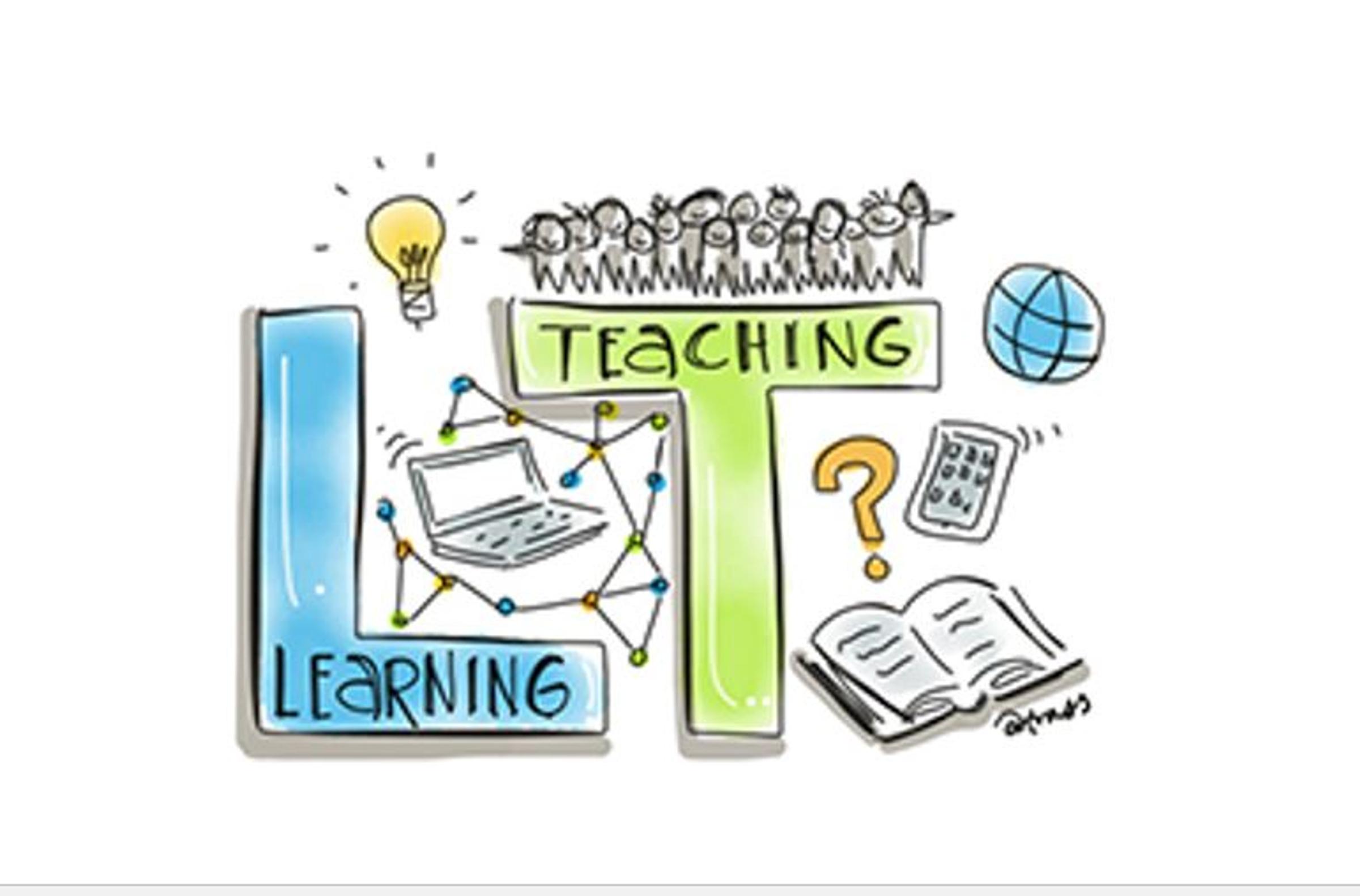
Learning & Teaching
Learning and Teaching encompasses the following areas: Student Outcomes, Curriculum, Assessment, Reporting, Principles and Pedagogy.
Dear Parents,
As we come to the end of Term 2, there are a few things to remember for reporting.
Semester One Reports – Available Monday, June 30th
Semester reports show your child’s progress and achievements based on the Victorian Curriculum: English, Maths, HPE, The Arts, Italian, Intercultural Understanding, Personal & Social Capabilities & and Religious Education.
The reports include progression points for each learning area and an assessment checklist for each area of learning: English, Maths, Religious Education, Inquiry PE, Visual Arts, Resilience Project, and Italian.
Please note that, as Colleen has mentioned in previous newsletters from Term 1, 2025, all schools will report against the Victorian Curriculum Version 2.0: Mathematics for Foundation to Year 10.
This brings changes to the reporting for Mathematics. Schools are now required to report one overall teacher judgment each semester, based on the whole Mathematics achievement standard. This replaces the previous three separate progression points for: Number & Algebra, Measurement & Geometry and Statistics & Probability. Please note: Version 1.0 and 2.0 are not directly comparable, so progress cannot be reported in Mathematics when schools are reporting against Version 2.0 for the first time.
Please remember that access to your child’s reports is via the nForma portal, if you have not done so, please download the app and register with your email address that is listed with the school.
At the Student-Led Conversations, students will share their learning in the areas of writing, spelling, and Mathematics. This will be an opportunity to celebrate growth and set goals for Term 3. Teachers will support the conversation and discuss students' strengths and challenges. Parents are encouraged to listen, ask questions, and celebrate their children's successes.
These two key events work together to give you a clear picture of your child’s learning and help strengthen the home-school partnership.


Supporting writing through goal setting and self assessment
Over the past weeks, our students have been developing their skills as confident and capable writers by setting personal goals in literacy. Goal setting has helped children take more ownership of their learning by identifying areas to improve such as using more descriptive language or organising their ideas clearly and working steadily towards those goals.
Students in Years 3 to 6 have also been using writing rubrics to support their learning. A rubric is a simple, clear tool that outlines what good writing looks like, often using a scale and criteria such as ideas, structure, spelling, and punctuation. With teacher support, students have used these rubrics to assess their own work and give constructive feedback to their peers. This process has helped students better understand writing expectations, reflect on their progress, and take meaningful steps to improve building independence, confidence, and pride in their writing.
In Years 3 and 4, students have also been using a Bump It Up Wall, a visual tool that displays a series of teacher provided writing examples at different achievement levels. This has helped students understand how to improve their writing by identifying the features of more developed or higher level pieces. Together, students closely analysed one piece of writing, discussing how it could be improved using the wall. This modelling has helped them apply similar strategies to their own writing.
Parents will have the opportunity to see these approaches in action during upcoming student-led conversations, where students will share their writing goals, how they’ve used rubrics and the Bump It Up Wall, and the progress they’ve made.
Bernadette Parnis
Literacy Leader
bparnis@sfmoreland.catholic.edu.au


Reminder to parents - Parent session on Addition & Subtraction in the early years
Tuesday 24th June 9am
Thursday 26th June 2:30pm
Come along and have some fun playing maths games and learning how to support your child at home with strategies to add and subtract. As the juniors are currently learning the subtraction strategies it will be relevant for supporting them at home.
Our Foundation students this week showed off their understanding of 2D shapes, making them on the geoboards and describing their features.
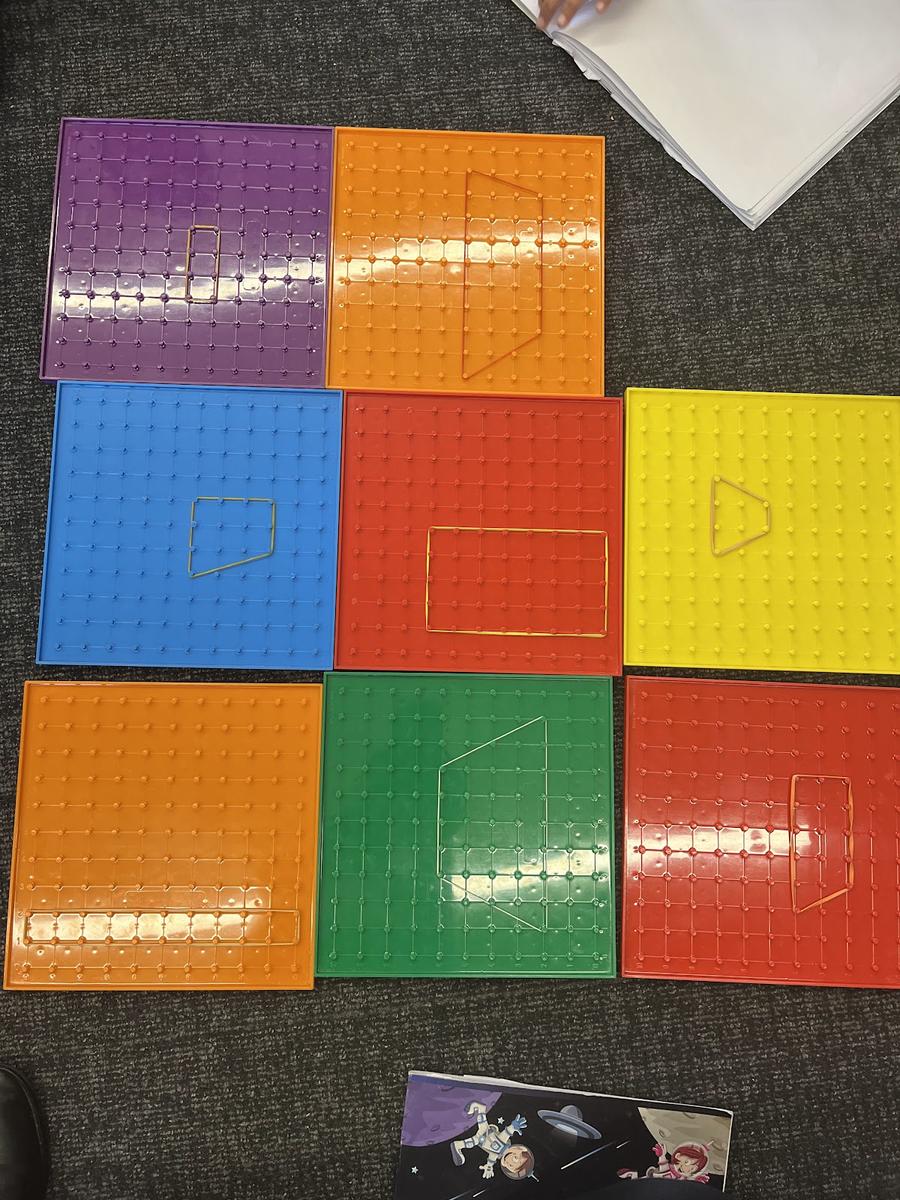

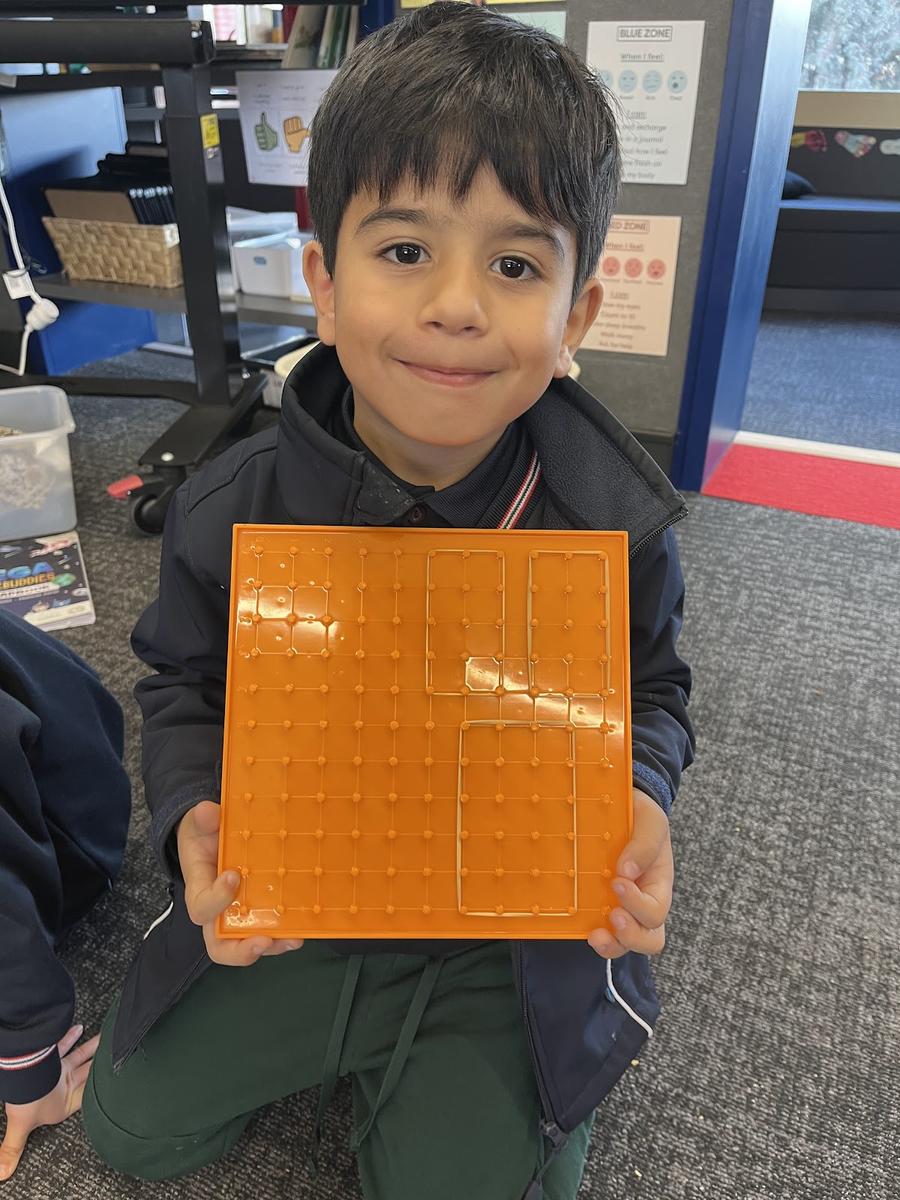

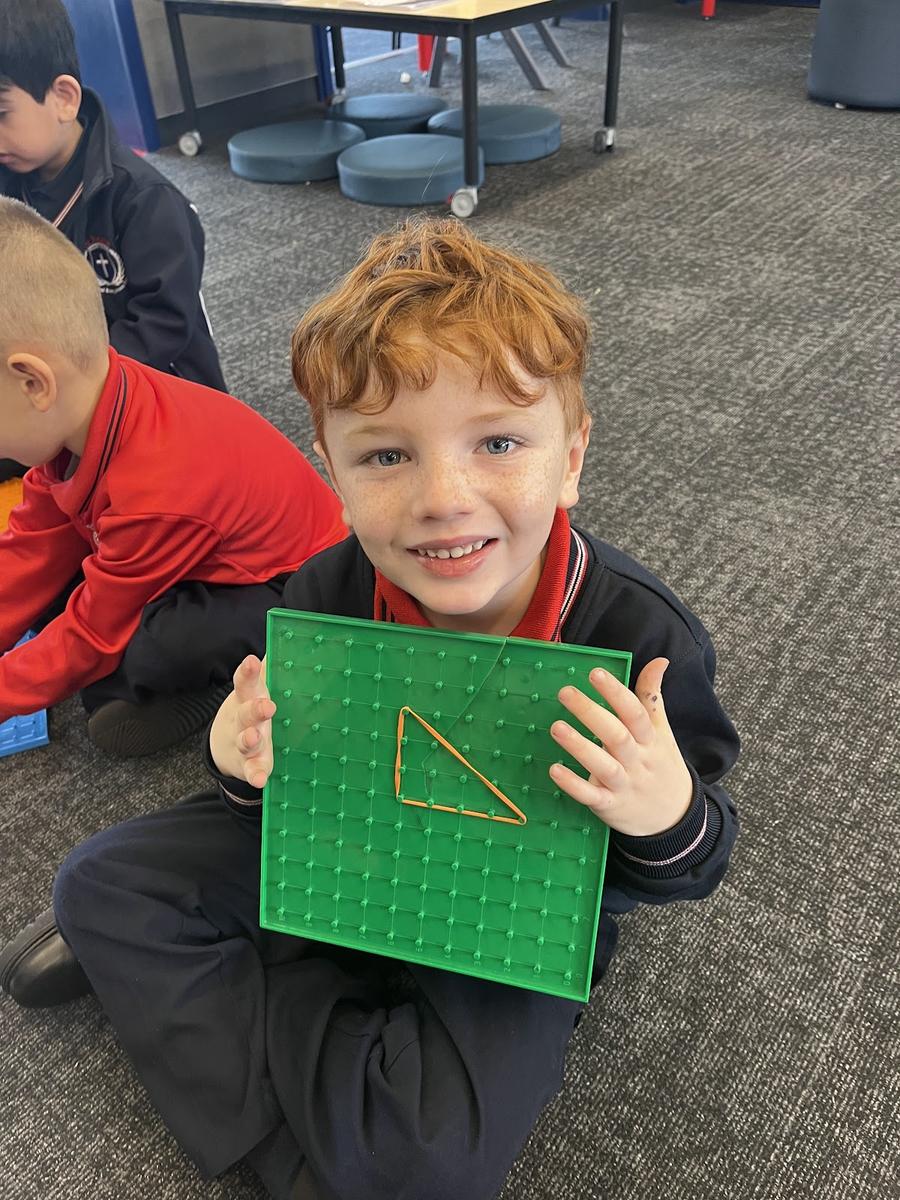

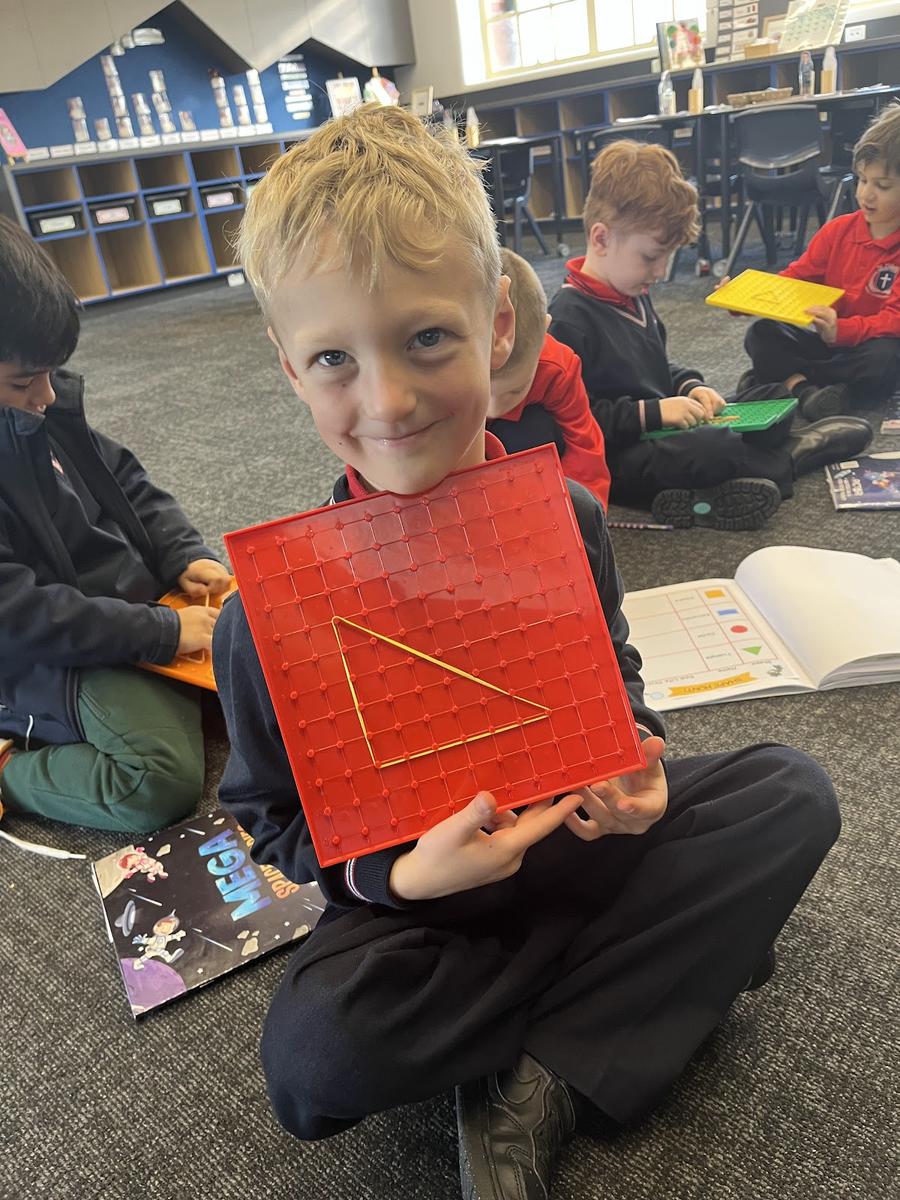

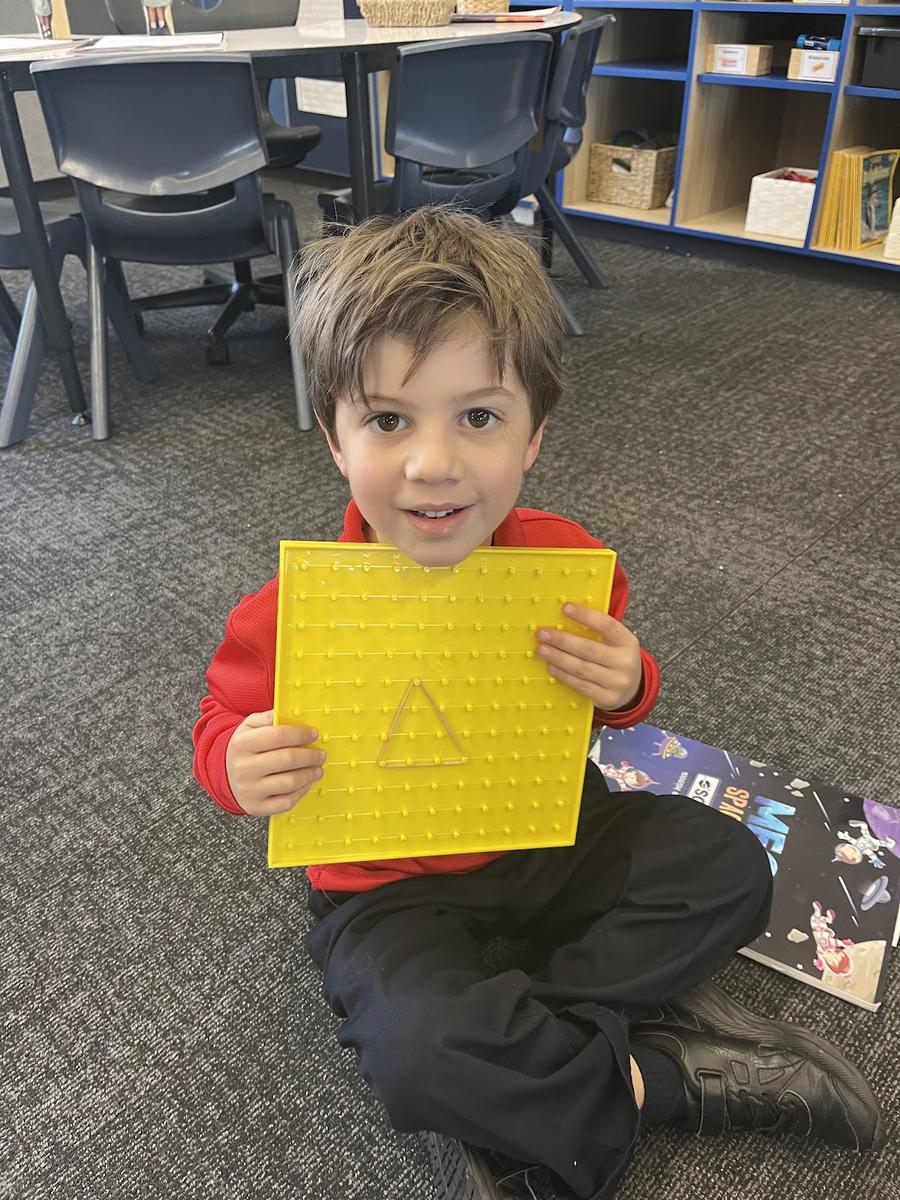
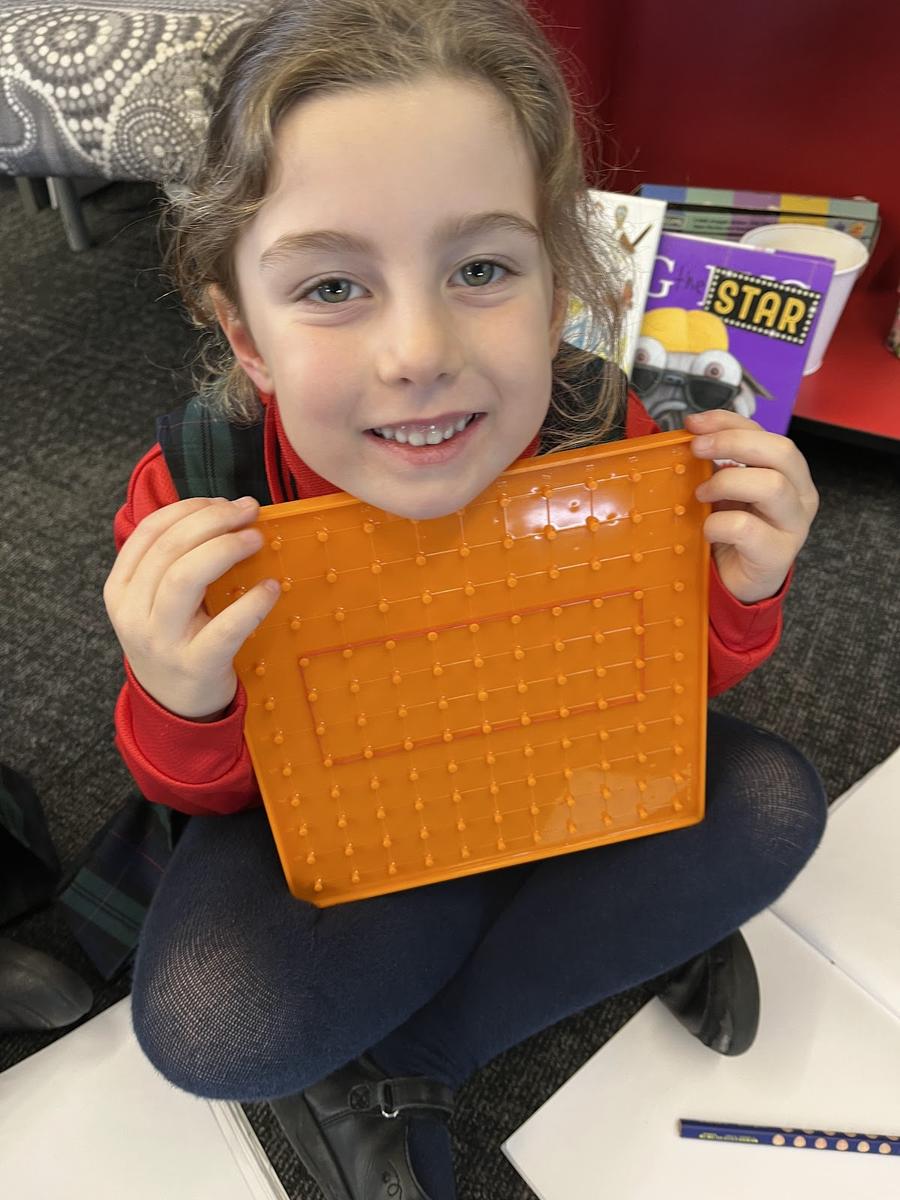












Congratulations to our APSMO students who sat their second Olympiad this week. It proved to be trickier than the first but well done to all for persistence and resilience with the challenges it presented.
I thought this article by Cath Pearn, Senior Research Fellow, Australian Council for Educational Research was worth sharing with you:
Jump, split or make to the next 10:
strategies to teach maths have changed since parents were at school
by Cath Pearn Published: December 16, 2020
Research shows parents have a significant influence on their children's learning, but some lack the confidence to provide at home support. To help parents engage with their children's maths learning, The Conversation asked ACER Senior Research Fellow Cath Pearn to explain three addition and subtraction strategies now taught in primary school.
I’m sure most people can remember trying to master a certain maths rule or procedure in primary or secondary school.
My elderly mother has a story about a time her father was helping her with arithmetic homework. She remembers getting upset because her father did not do it “the school way”. I suspect her father was able to do the calculation mentally rather than the school way, which was to use the vertical algorithm.


Students are expected to add the numbers in the ones (right) column first, before adding the numbers in the tens (left) column. The task becomes more difficult when the total of the ones column is more than 10 — as you then have to “trade” ten ones for one ten.
Students who give the answer as 713 rather than the correct answer of 83 may well have started with the tens column first. Or they may have written 13 in the ones column rather than trading ten ones for one ten.
The formal school algorithms are still used for larger numbers and decimals but we encourage students to use whichever strategy they prefer for two-digit addition.
The trouble with teaching rules is many students then struggle to remember when to apply the rule because they don’t understand how or why the rule works.
The Australian Curriculum: Mathematics states that by the end of Year 2, students will “perform simple addition and subtraction calculations using a range of strategies”. By the end of Year 4, they will “identify and explain strategies for finding unknown quantities in number sentences”.
We want children to remember how to do these equations in their head, rather than relying on writing down the process. Here are three strategies schools use to teach children how to add and subtract two-digit numbers.
1. Split strategy
This is sometimes called the decomposition, partitioning or partial-sums strategy.
You can add or subtract the tens separately to the ones (or units). For example, using the split strategy to add 46 + 23, you would:
Using the split strategy for addition such as 37 + 65 would be similar, but there would be an extra step:
Many students find the split strategy more difficult for subtraction than addition. This is because there are more steps if performing this strategy mentally. For a subtraction such as 69 – 46, you would:
Students often make mistakes in the third step. Successful students may say: “I take 40 from 60, then 6 from 9”. Unsuccessful students will say “I take 40 from 60 then add 6 and 9”.
Students who use this strategy successfully are showing they understand place value (the value of each digit in a number) and their knowledge of maths rules needed for algebra.
2. Jump strategy
This is sometimes called the sequencing or cumulative sums strategy. The actual steps taken depend on the confidence and ability of the students.
Some students add increments of tens or ones, while others add or subtract multiples of tens then ones.
For example, adding 46 + 23 using the jump strategy might look like this:
or
The two versions of this strategy can be shown using an empty number line. Using a blank or empty number line allows student to record their thinking and for teachers to analyse their thinking and determine the strategy they have attempted to use.


Subtracting 69 – 46 with the jump strategy could be done by:
or


3. ‘Make to the next ten’ strategy
This is sometimes called the compensation or shortcut strategy. It involves adjusting one number to make the task easier to solve.
The “make to the next ten” strategy builds on the “friends of ten” strategy.
Many students in the first years of primary school create all the combinations of two single digit numbers that give a total of ten.
9 + 1, 8 + 2, 7 + 3, 6 + 4, 5 + 5 …
These are sometimes called the rainbow facts as the children create rainbows as they connect two numbers together. For instance, 9 may be on one end of a rainbow colour and 1 on the other.
By combining the numbers in this way teachers hope students will realise the answer for 9 + 1 is the same as 1 + 9.
In the “make to the next ten” strategy, you add or subtract a number larger than the number given (such as the next multiple of ten) and then readjust the number by subtracting what was added or adding what was subtracted. In the diagrams the relationships are indicated by the use of arrows.


So, to add 37 + 65, you would
If subtracting 102 – 65, you would:
Many students using this strategy incorrectly add 2 to 65 instead of subtracting 2.
Why these strategies?
Students would have been using all these strategies, or some forms of them, in their head for generations. But for many years, the expectation was that students use the formal written algorithm rather than their own mental strategies.
The introduction of the empty or blank number line allowed students to record their mental strategies, which allowed teachers and parents to see them. Naming these strategies has allowed teachers and students to discuss possible strategies using a common vocabulary.
Rather than teach rules and procedures, we now need to encourage students to explain their strategies using both concrete materials and diagrams to demonstrate their knowledge of addition and subtraction.
INTERSCHOOL SPORT RESULTS
Congratulations to the St Fidelis AFL9s Boys/Mixed Team on their win against AIA on Friday 13 June.
The team should feel very proud of the way they played, supported each other, and gave everything for the team.
Final Scores:
St Fidelis 6 goals 6 behinds 46 points
Defeated
AIA 3 goals 3 behinds 21 points
Here’s a great team photo from after the game!
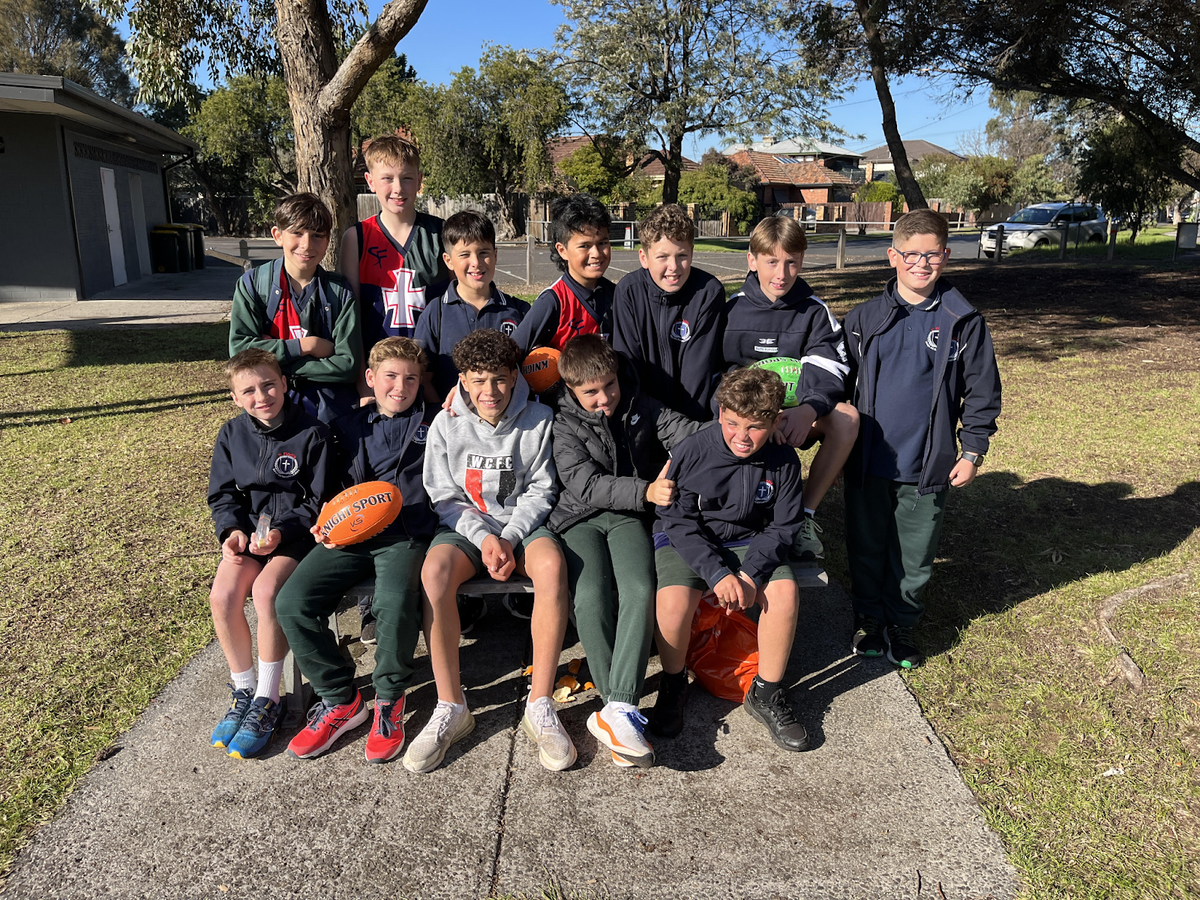

Our Foundation students became creative designers, engineers and builders as they explored how to plan and build tunnels using Duplo LEGO.
Learning Intention: Students worked with their partners to review how to plan and build a tunnel using Duplo LEGO bricks.
Success Criteria:
The session began with thoughtful discussion as students shared their ideas and created simple plans for their tunnels. Then it was time to build! With just 40 minutes, students worked together to bring their ideas to life using Duplo LEGO — making sure to take turns and support each other throughout. At the end, each team proudly presented their tunnel to Mr. Frazzetto, ready for the final test!
It was a fantastic activity that supported teamwork, problem-solving, and creativity — and the results were incredible! Well done to all our clever tunnel builders! Here are some photos of Foundation Engineers and their tunnels.

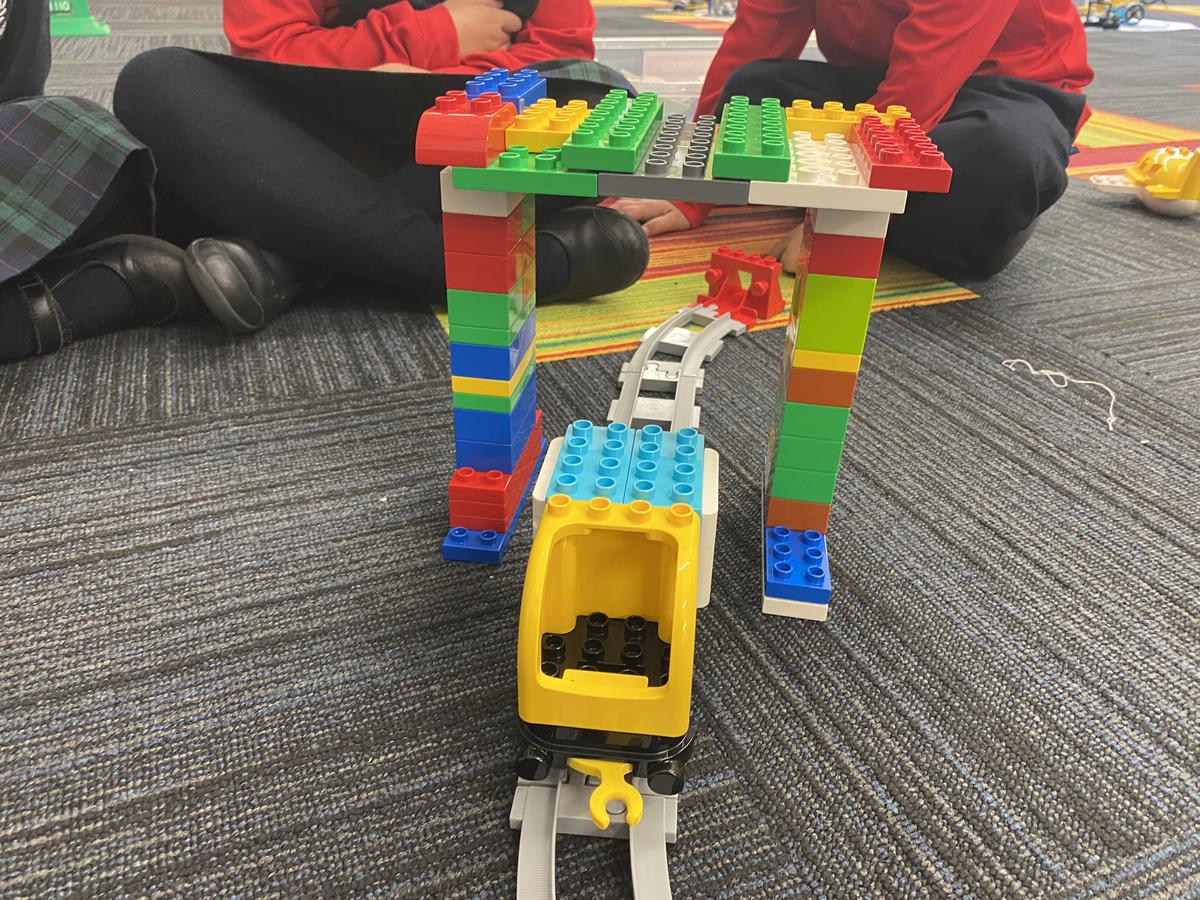
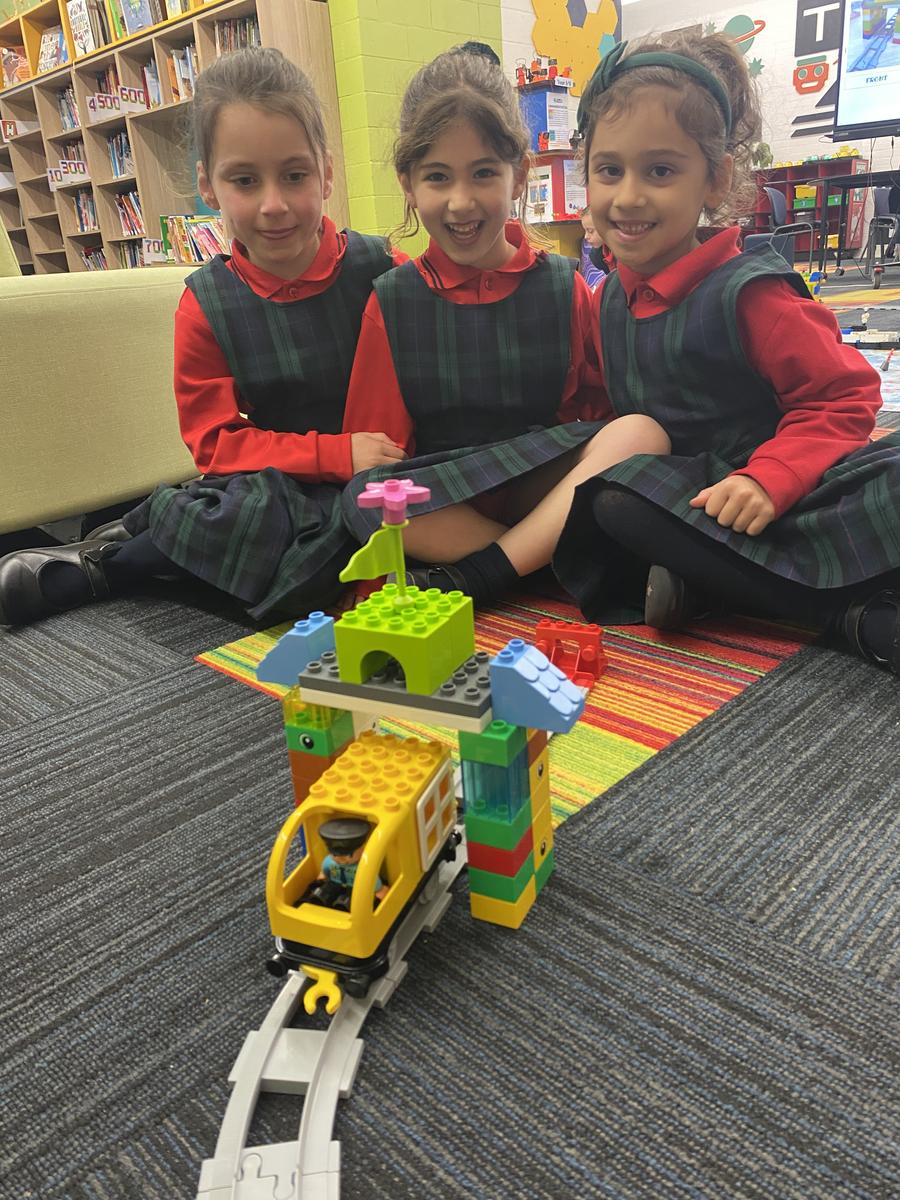


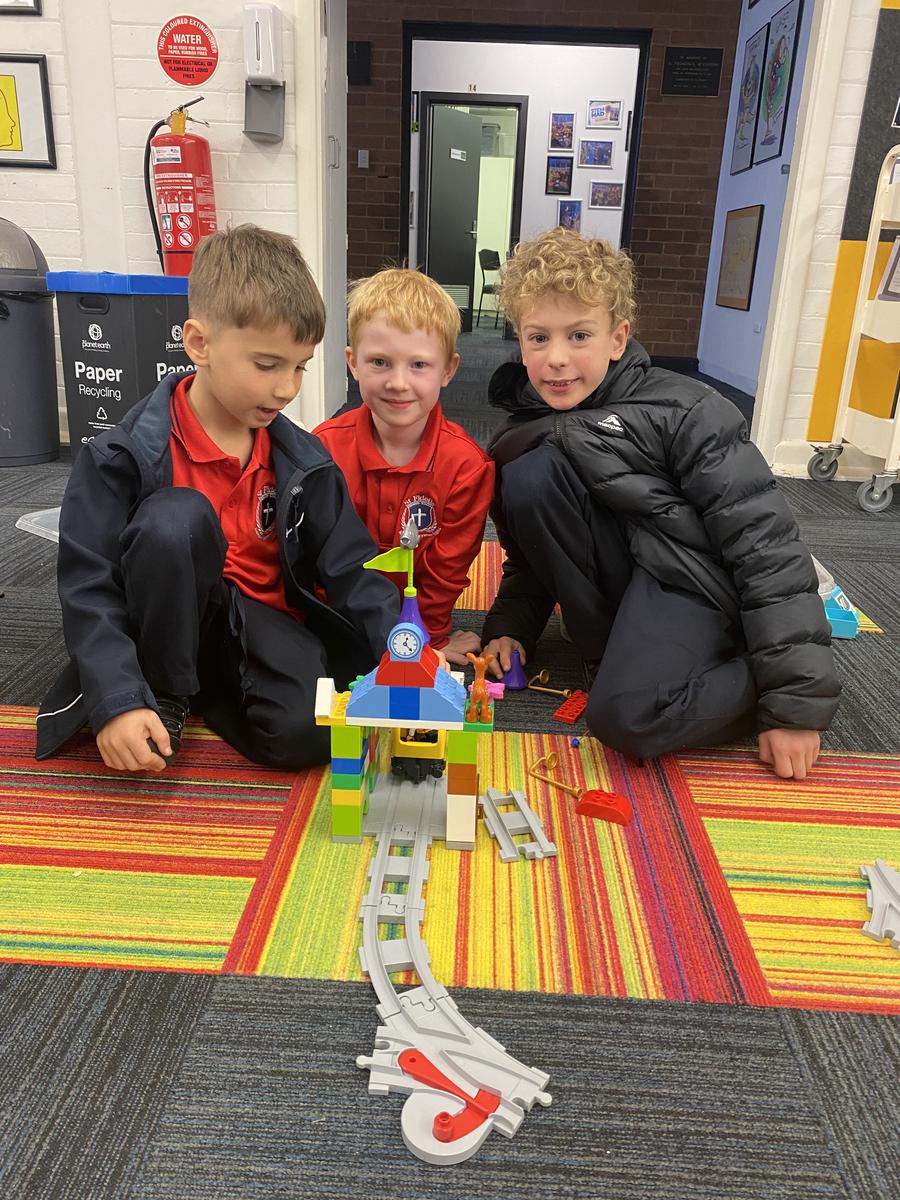

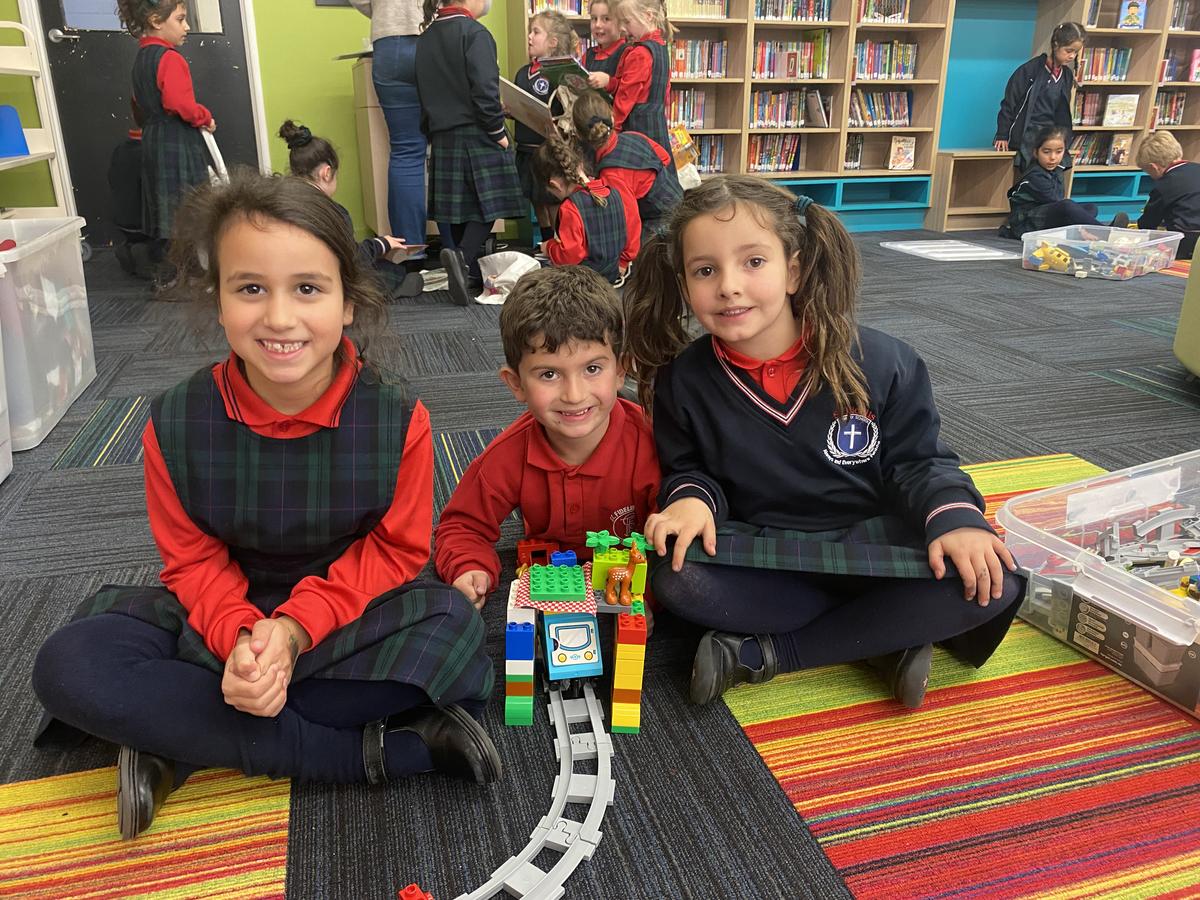
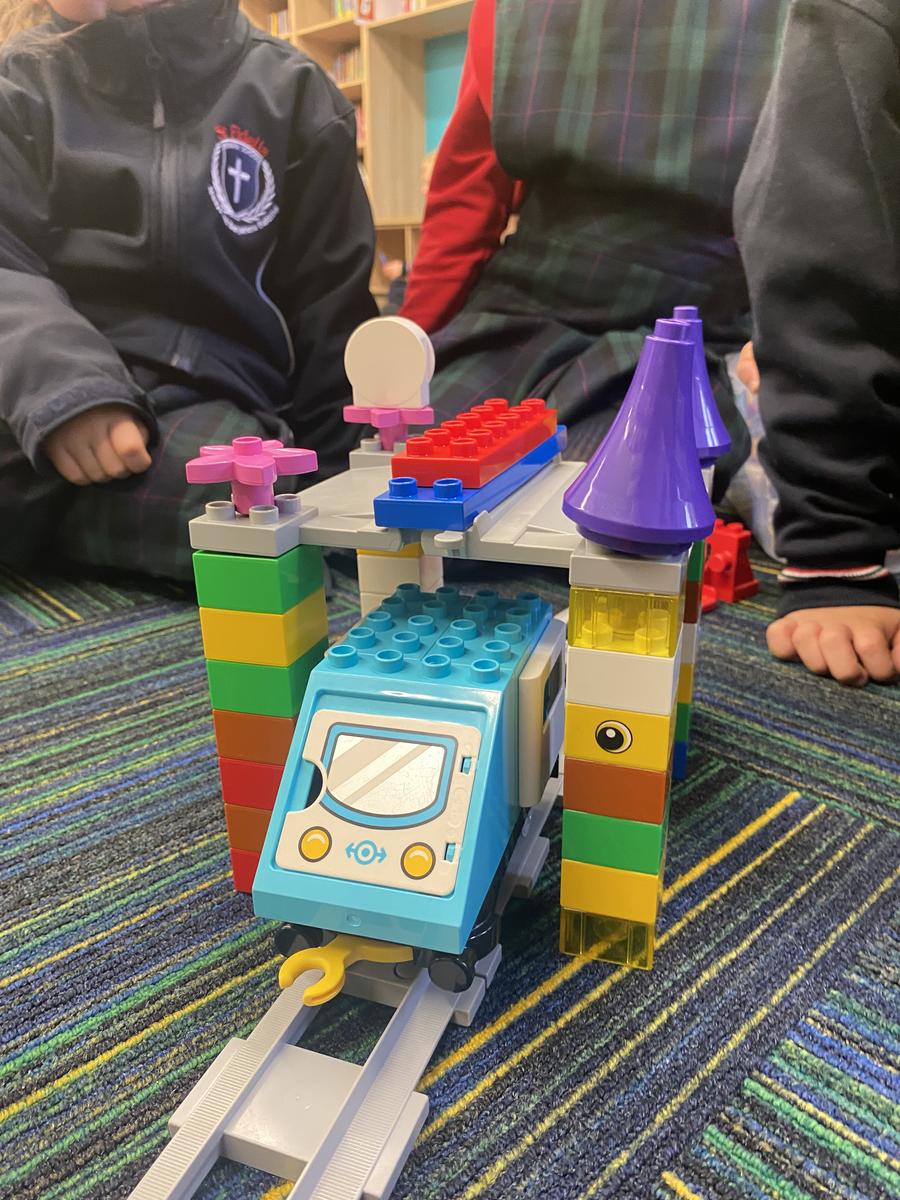
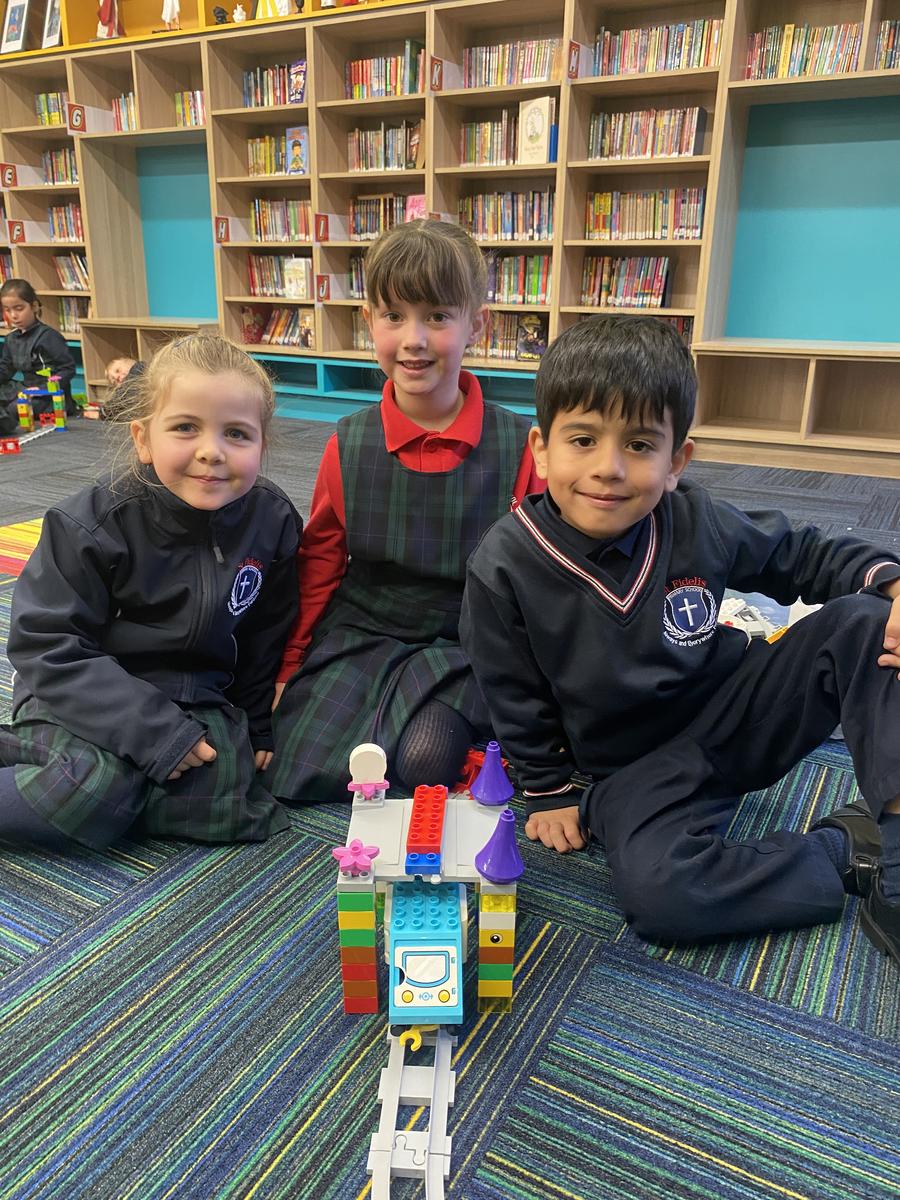
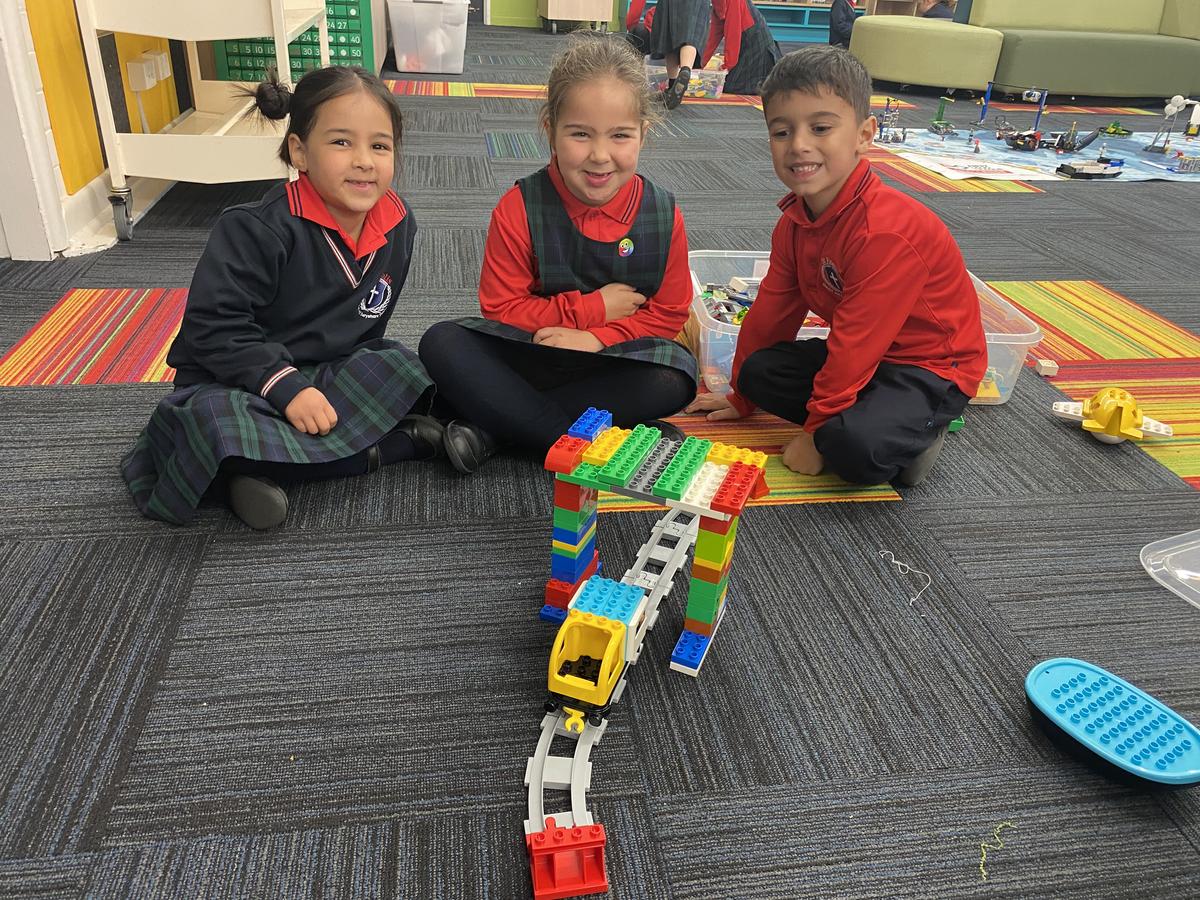
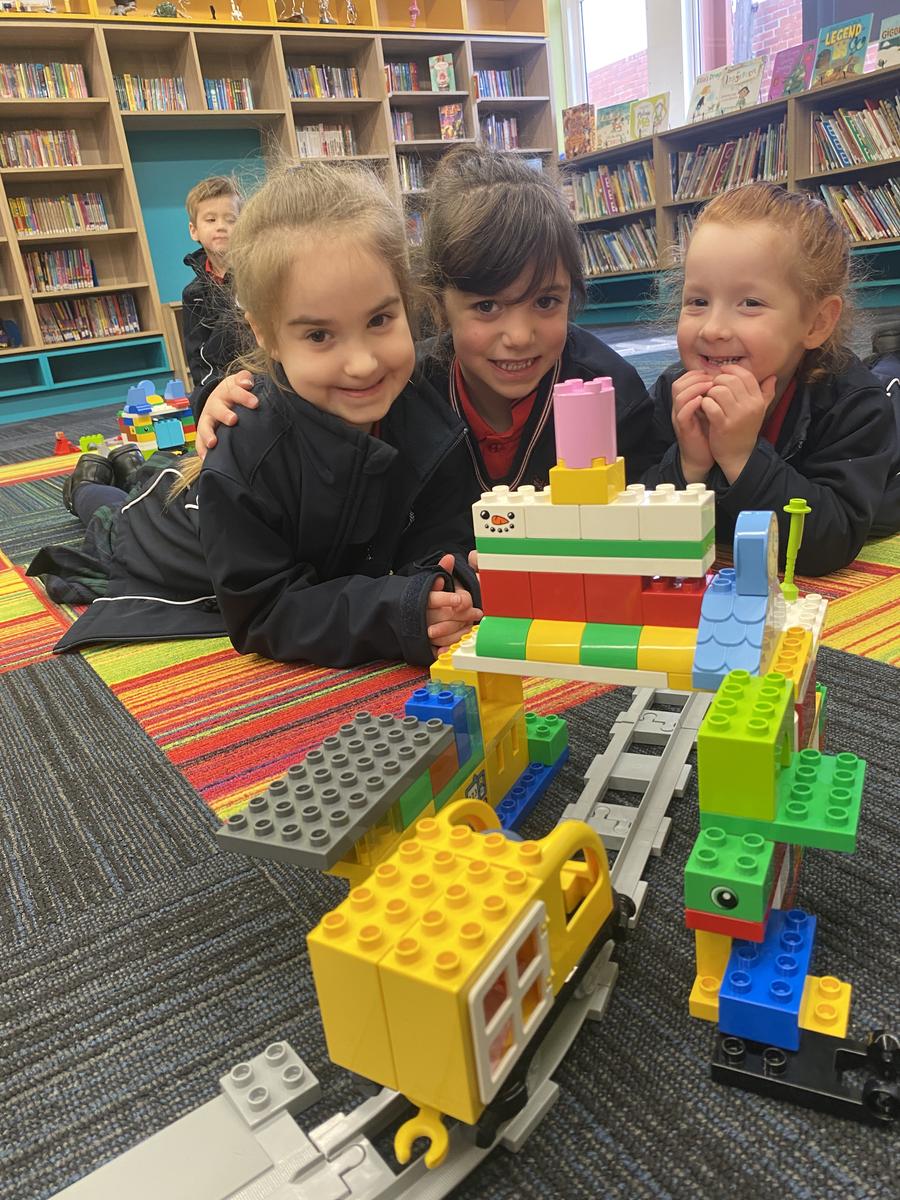
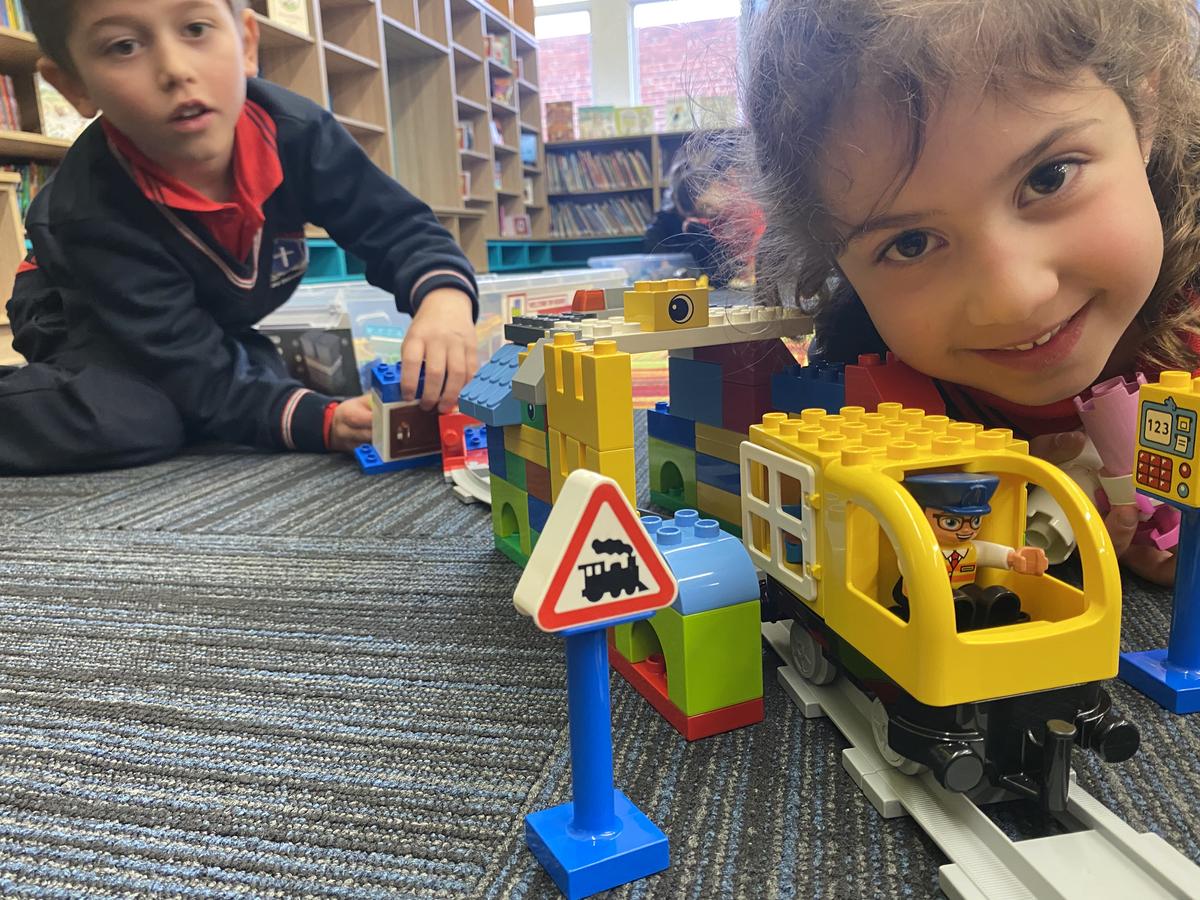













Our innovative Year 1/2 students stepped into the world of coding and robotics using the LEGO WeDo 2.0 kits!
We began by exploring the big idea: "What is coding?" Students learned that coding is how we tell computers what to do. By using special words called code, we can give instructions to computers — helping us make games, apps, and even control real-life machines! Using the LEGO WeDo 2.0 kits, students were challenged to:
For this task, students created a Cooling Fan and programmed it using a simple drag-and-drop coding system. They:
It was an exciting, hands-on session where students combined creativity, collaboration, and technology. They loved watching their code come to life — and seeing how small changes in the program could affect how their fan worked.
We’re so proud of our Year 1/2 coders for their teamwork and problem-solving skills. The future is bright with young engineers like these! Here a short video of the Year 1/2 Fans in ACTION!
BUONGIORNO!
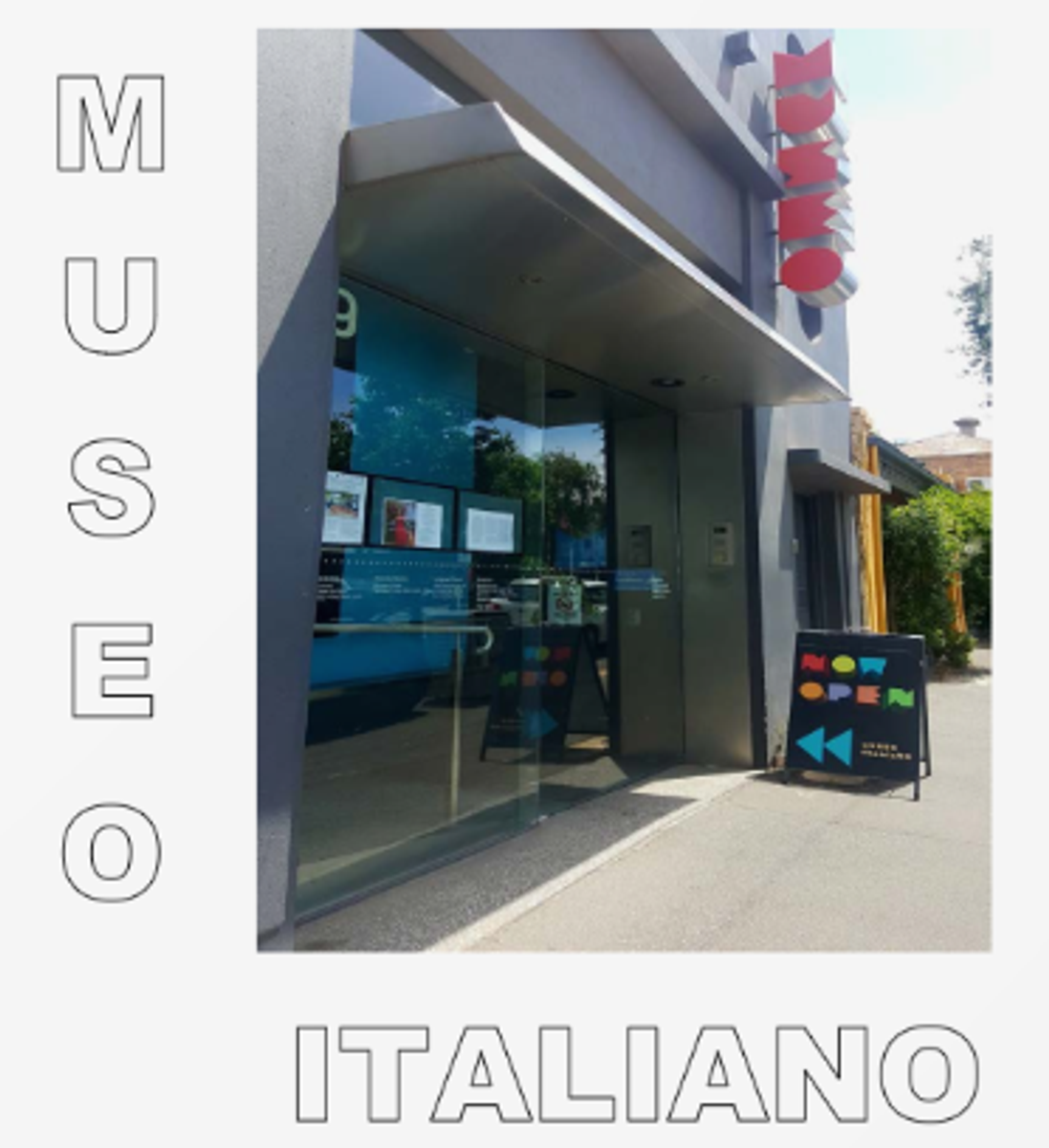

Salve a tutti! (Hello to all!)
I hope everyone had a lovely weekend. Il tempo (the weather) was very conducive to staying indoors and perhaps watching a favourite tv show, an indoor sport or playing a family gioco (game) together.


Talking about activities, venerdì scorso, (last Friday), il 13 giugno, all the grade 3/4 students, along with myself - signora Rosa, signora Panzarino, signora Hogan, signor Frazzetto, signora Janette, signorina Bianca e signorina Chloe (student teacher) and a group of parent helpers, went on an excursion down to il museo italiano, (the Italian Museum) in Carlton. The students listened very attentively to signora Maria, the museo’s presenter, recounting stories and information about the Italian migration experience to Australia.
Numerous bambini, (children) e adulti and (adults), were able to relate to the stories told by Maria, especially since many of them had heard similar stories from their own nonni e bisnonni (grandparents and great grandparents). They too, had stories to share about their nonni immigrating during the 1950’s and 1960’s, as well as traditions that their nonni have taught them and continue to do even until today. I’m sure many of the families reading this article know of someone who has just recently made salami and sausages over the long weekend that has just passed. This tradition has been carried over from our nonni’s traditions back in Italy many, many years ago.
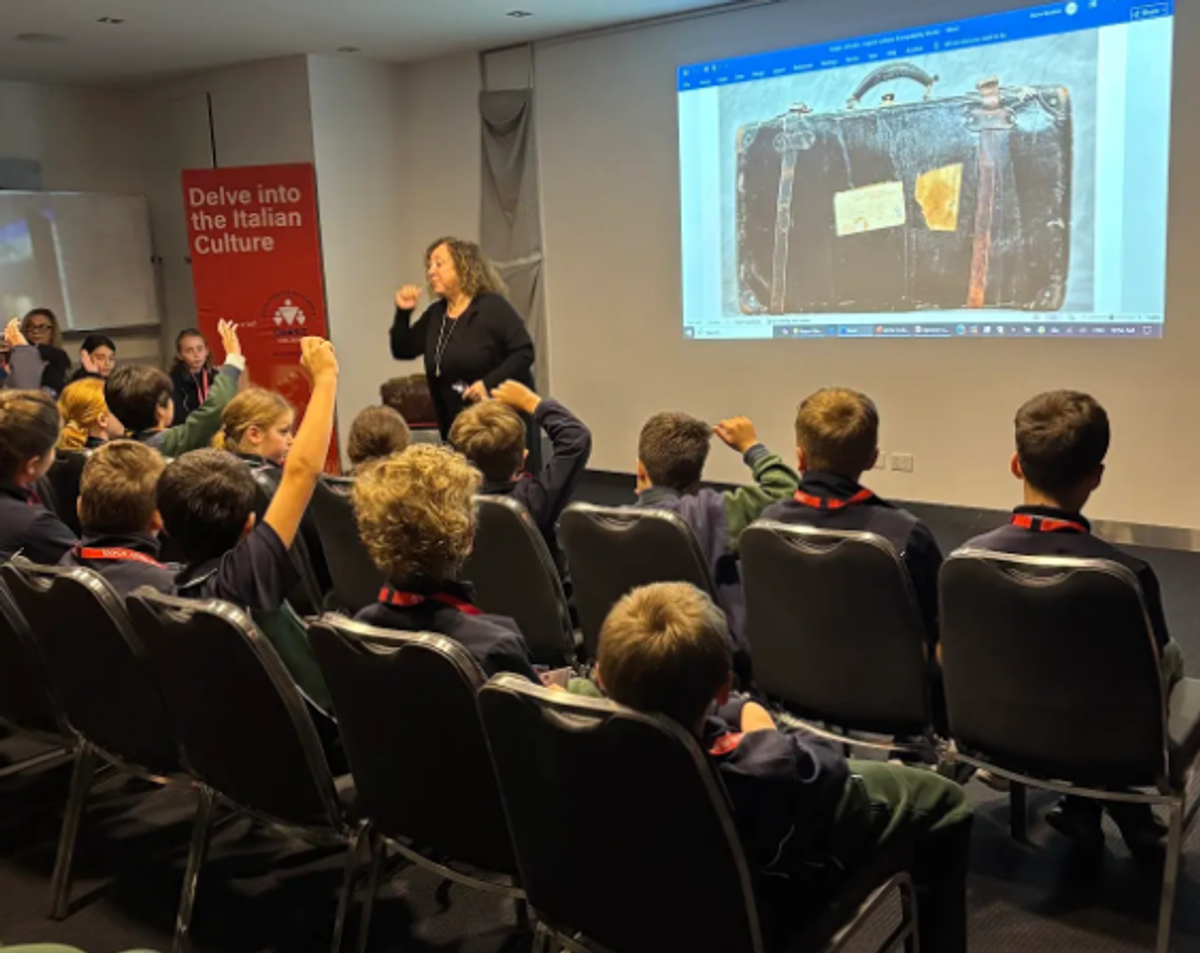
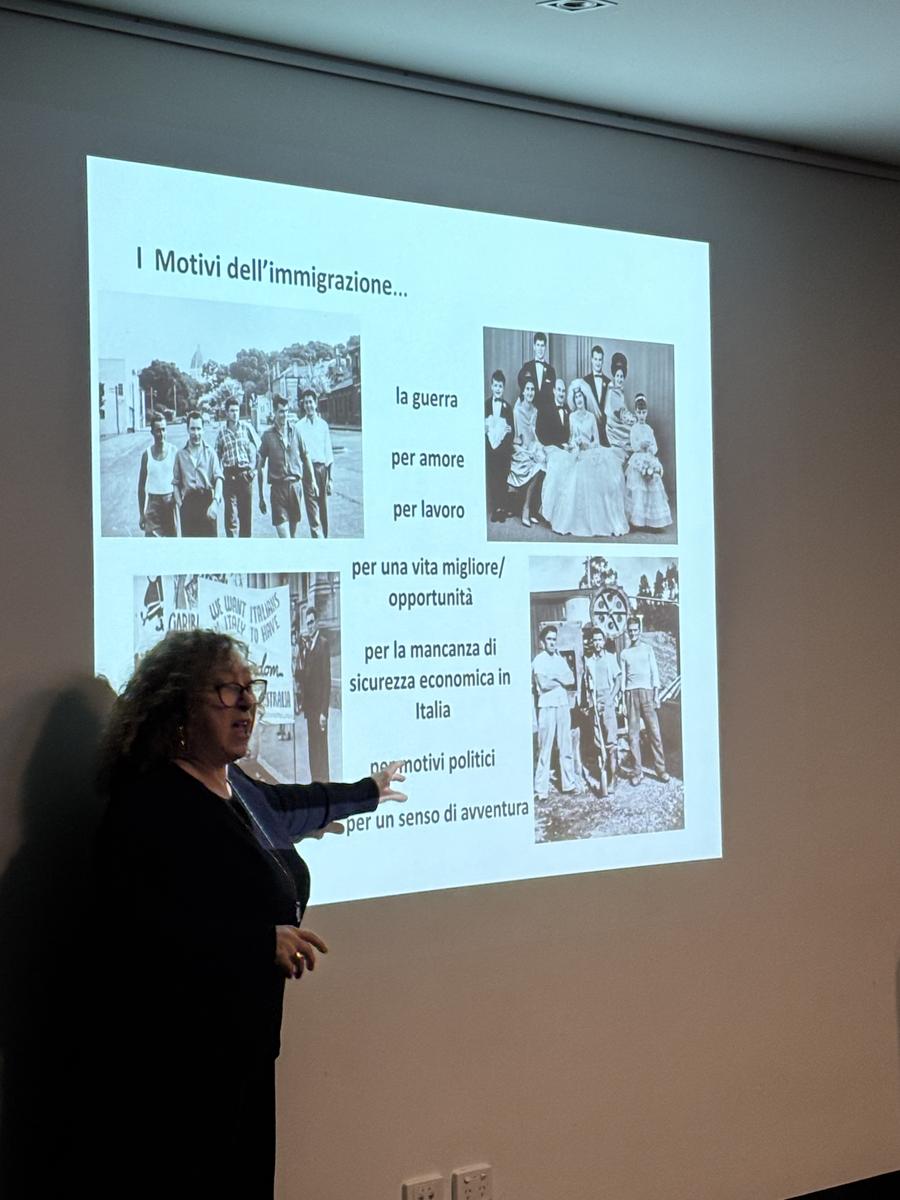
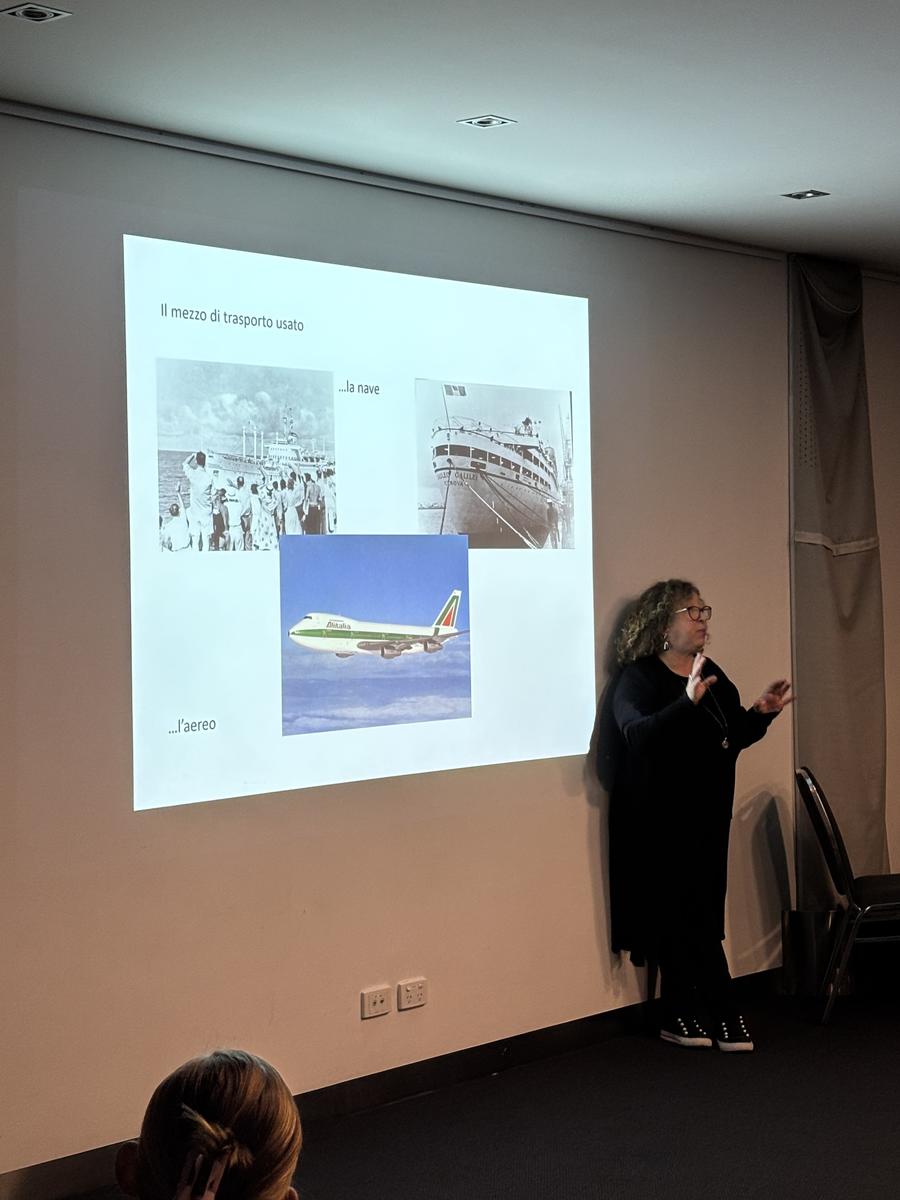


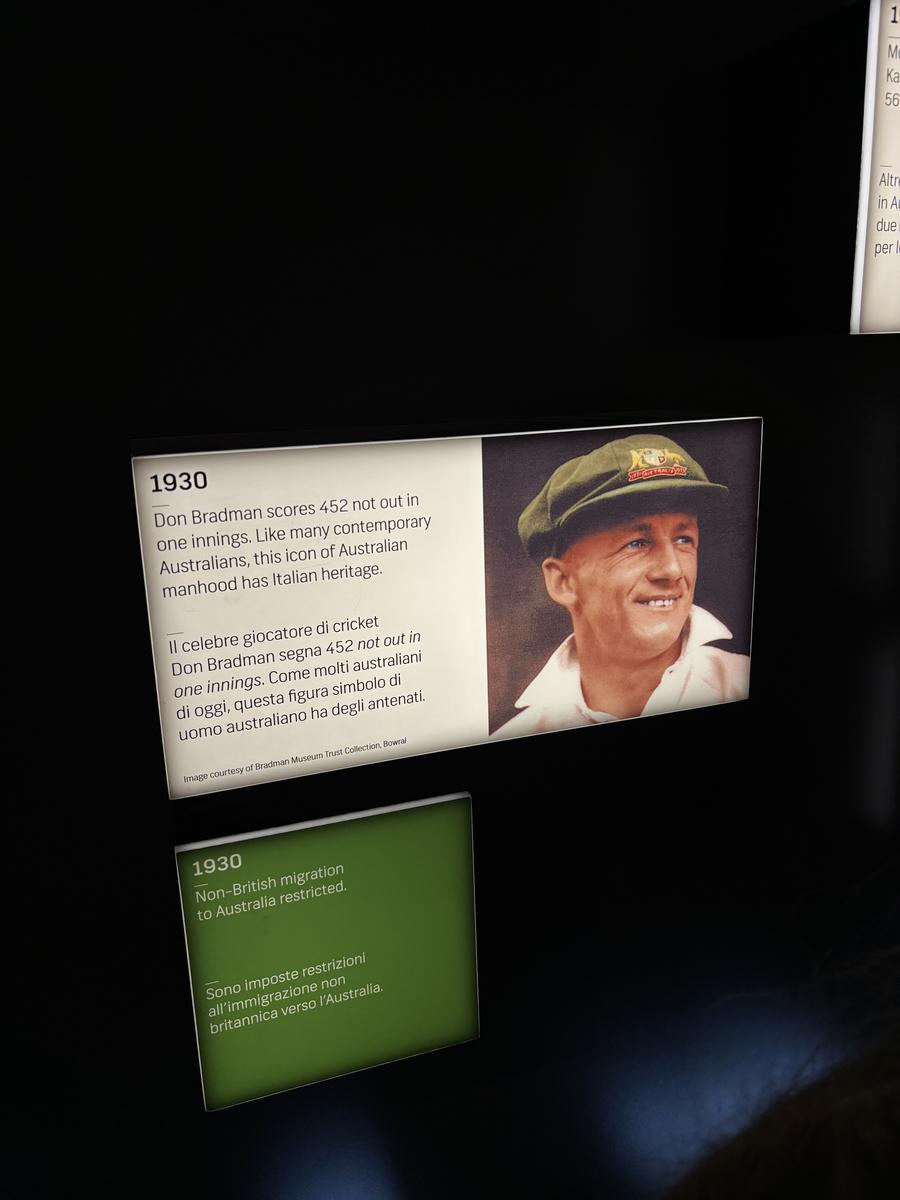
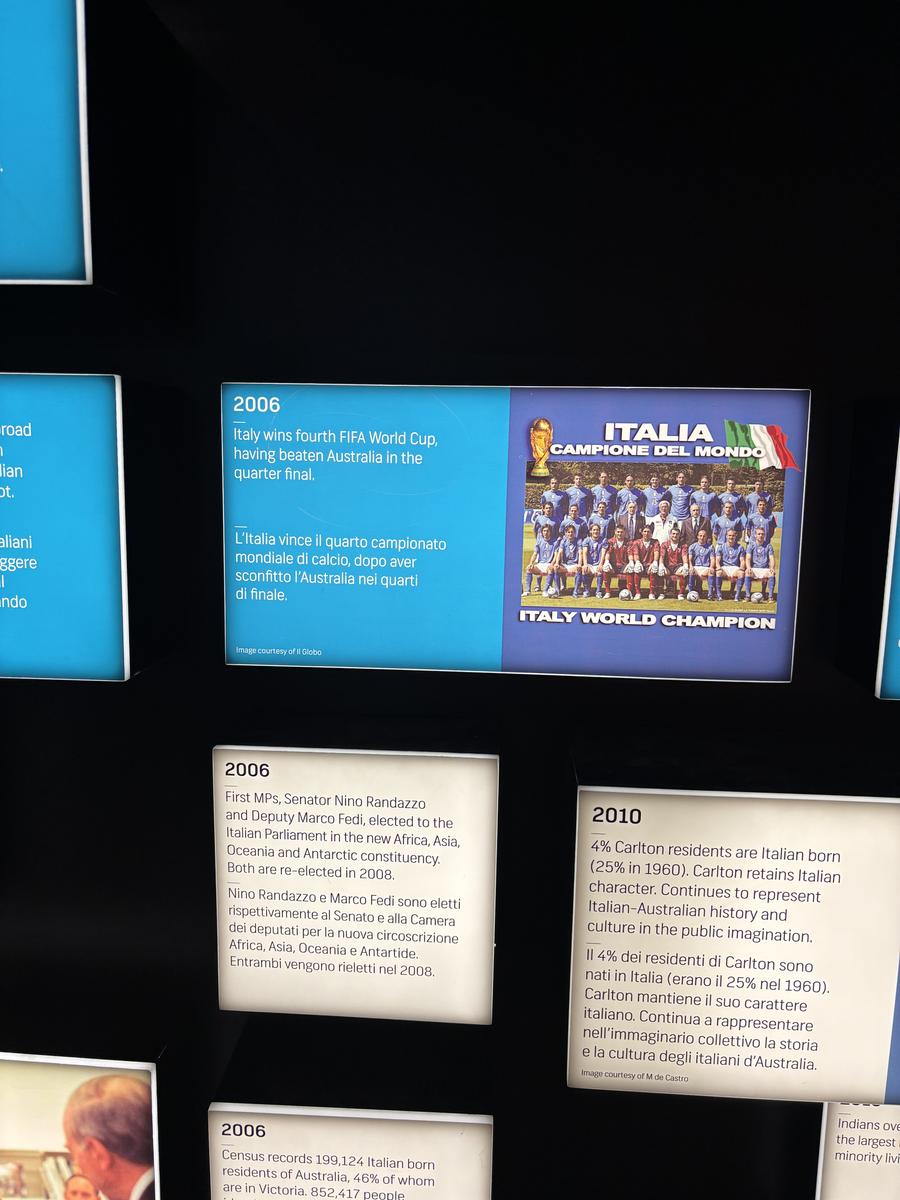
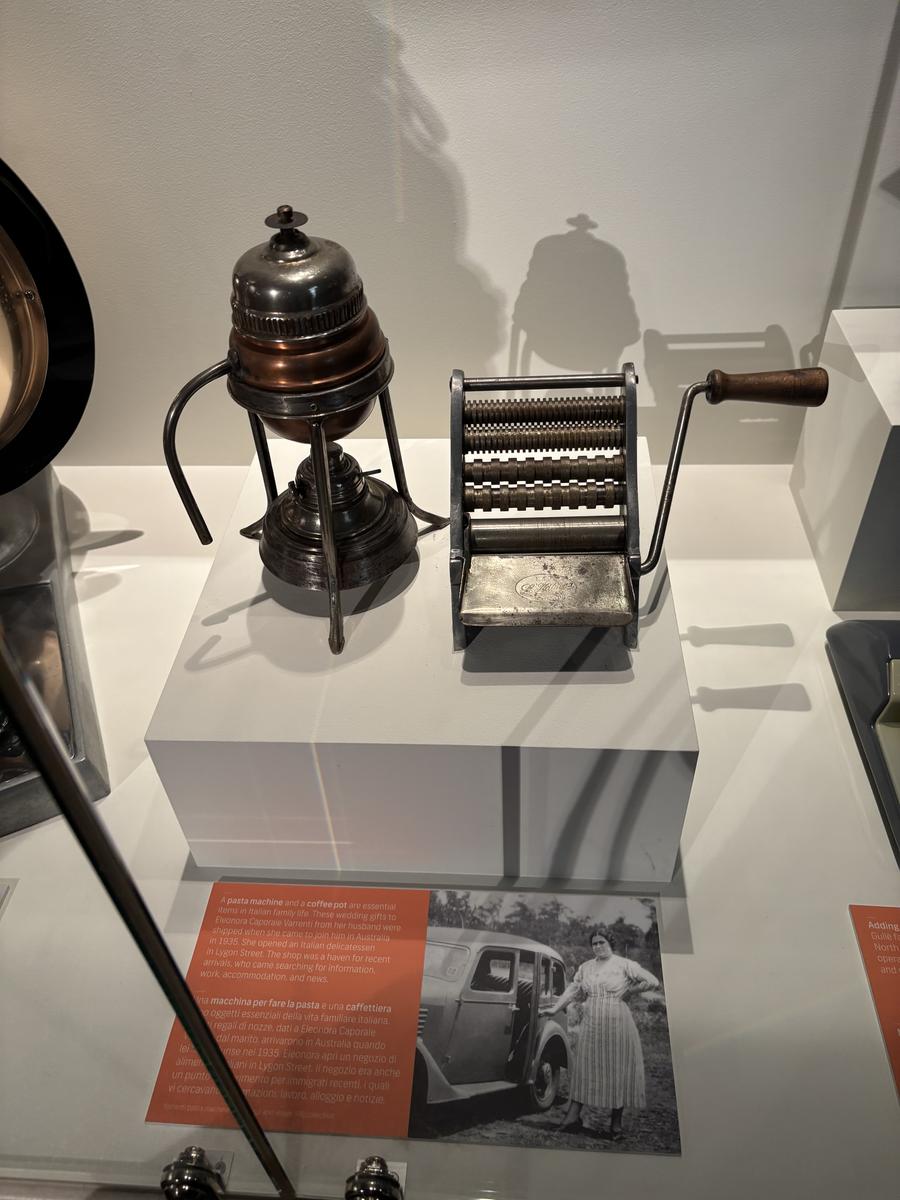
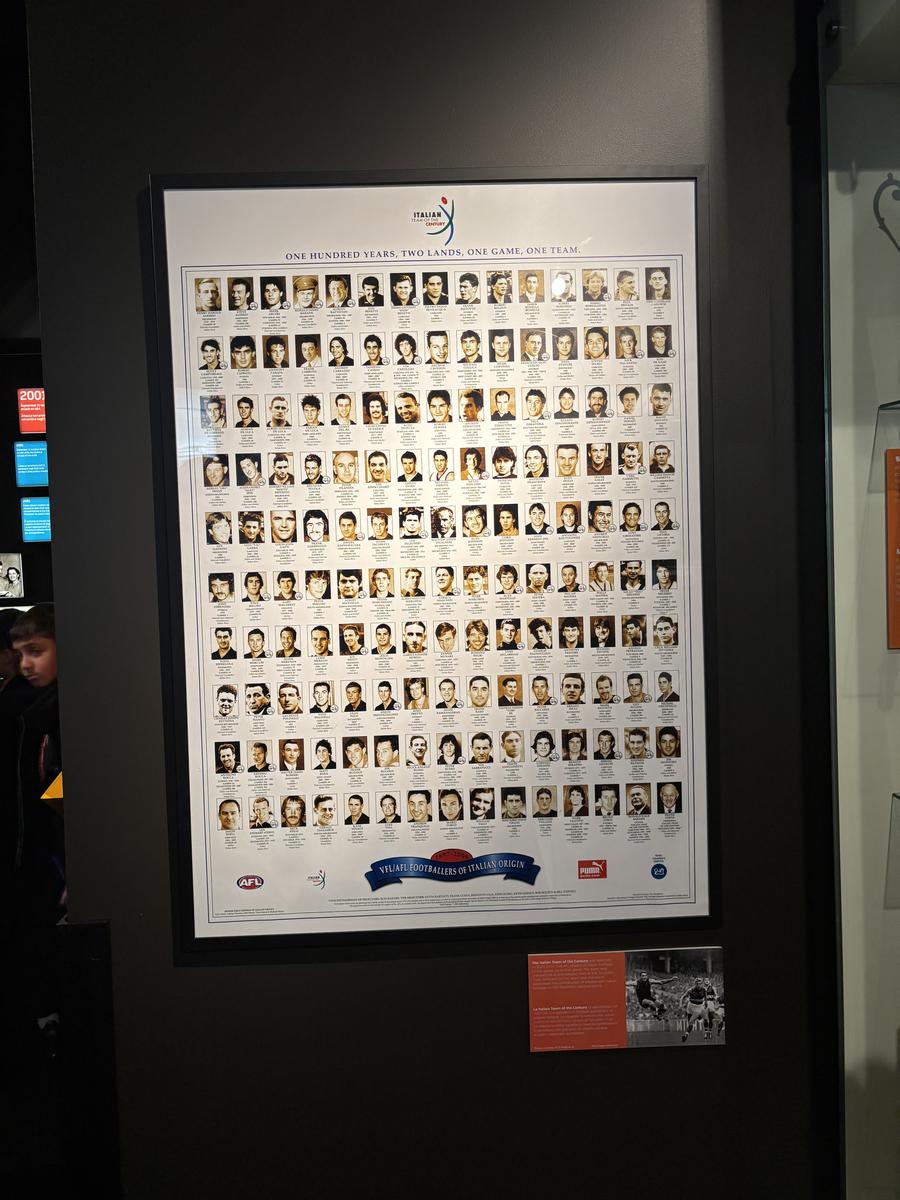
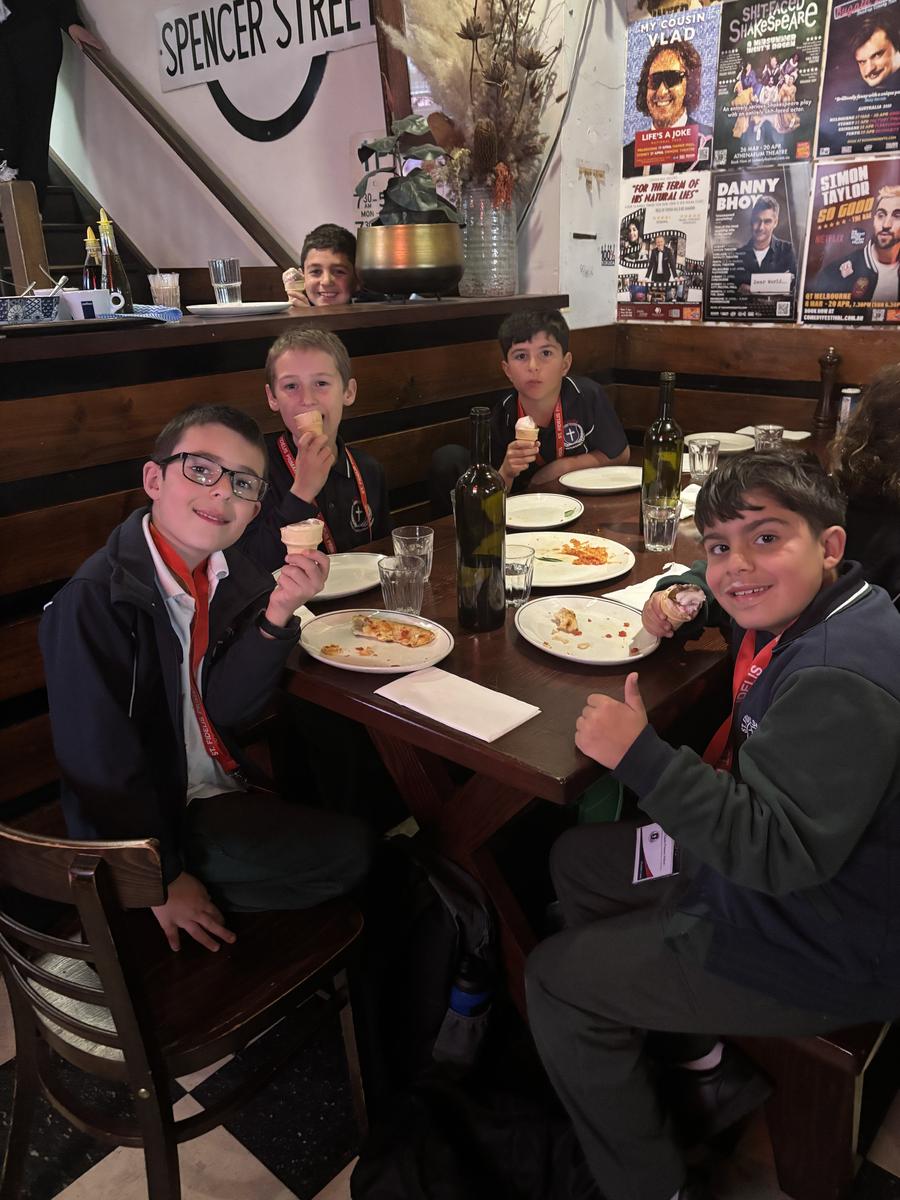
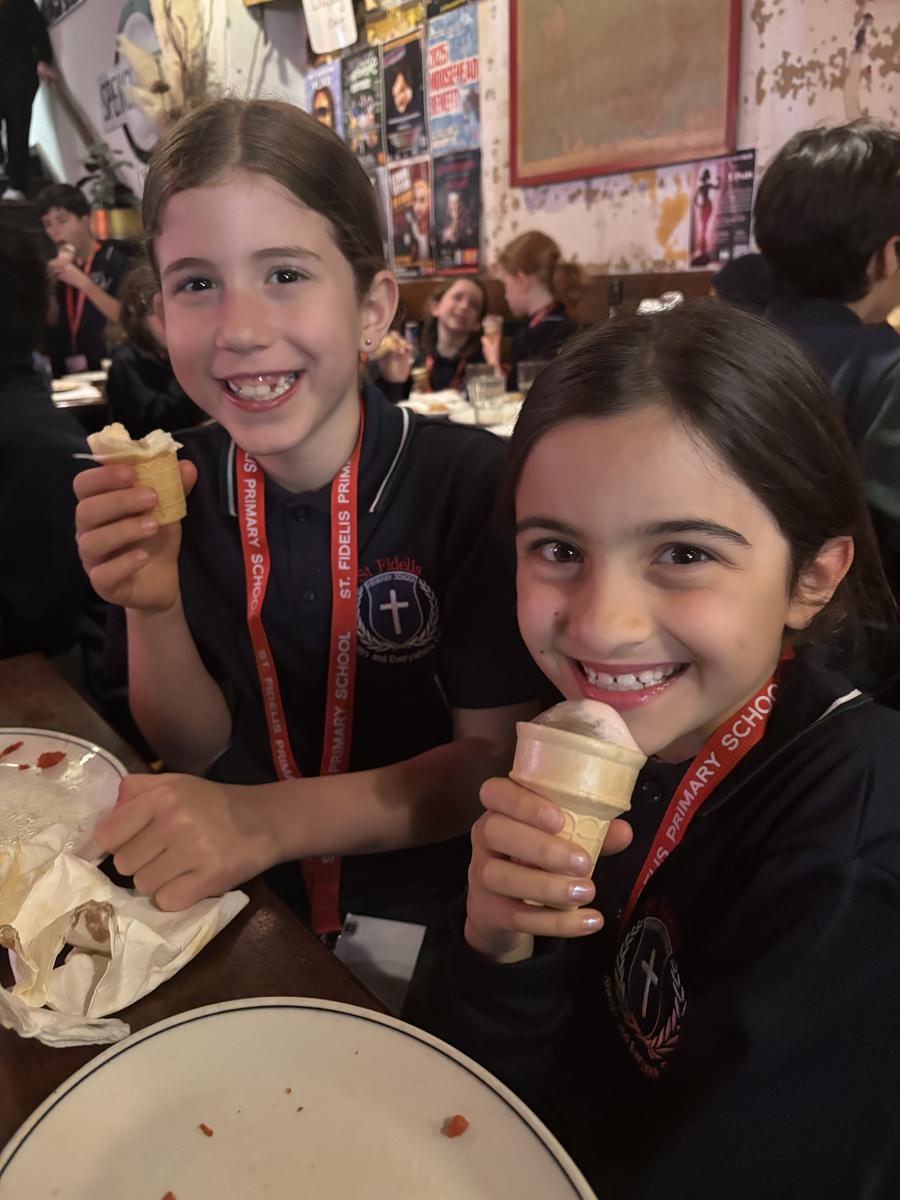
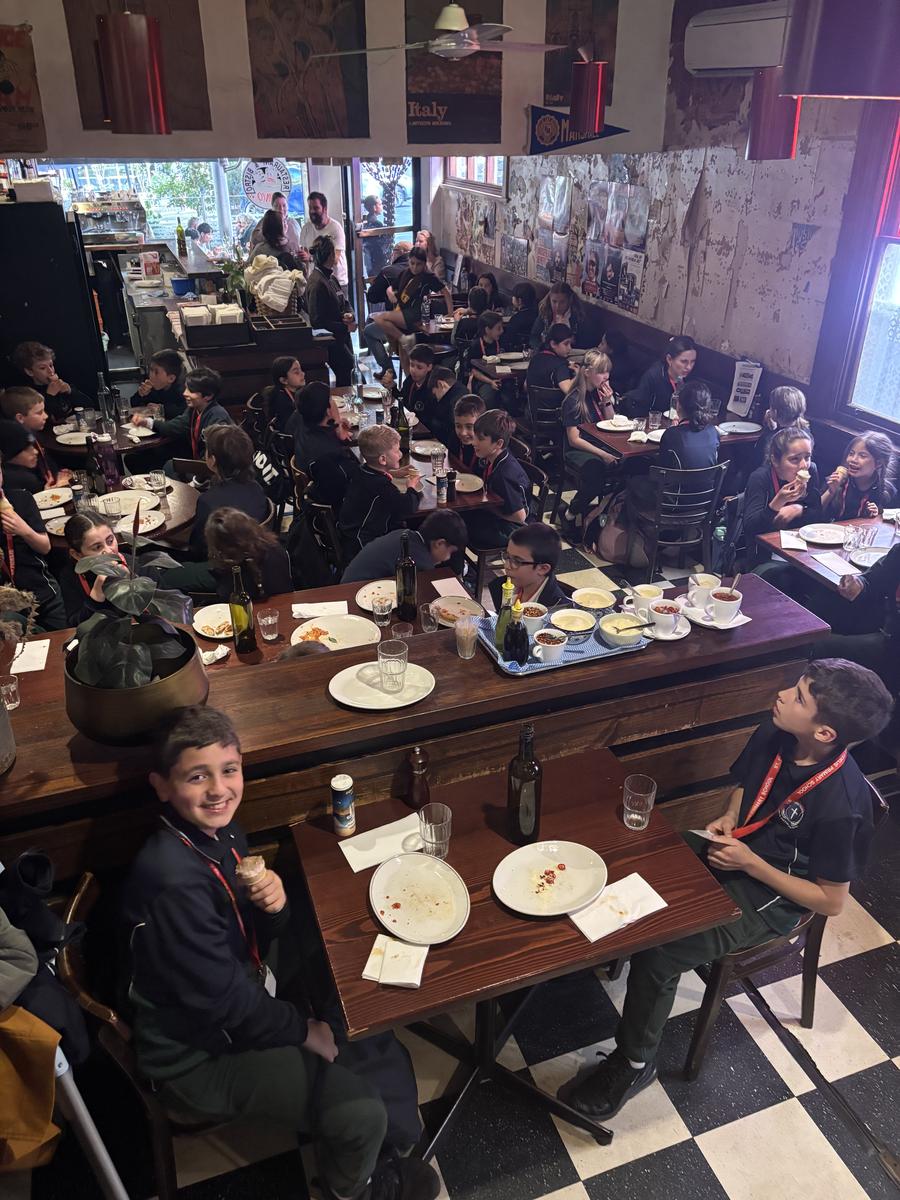

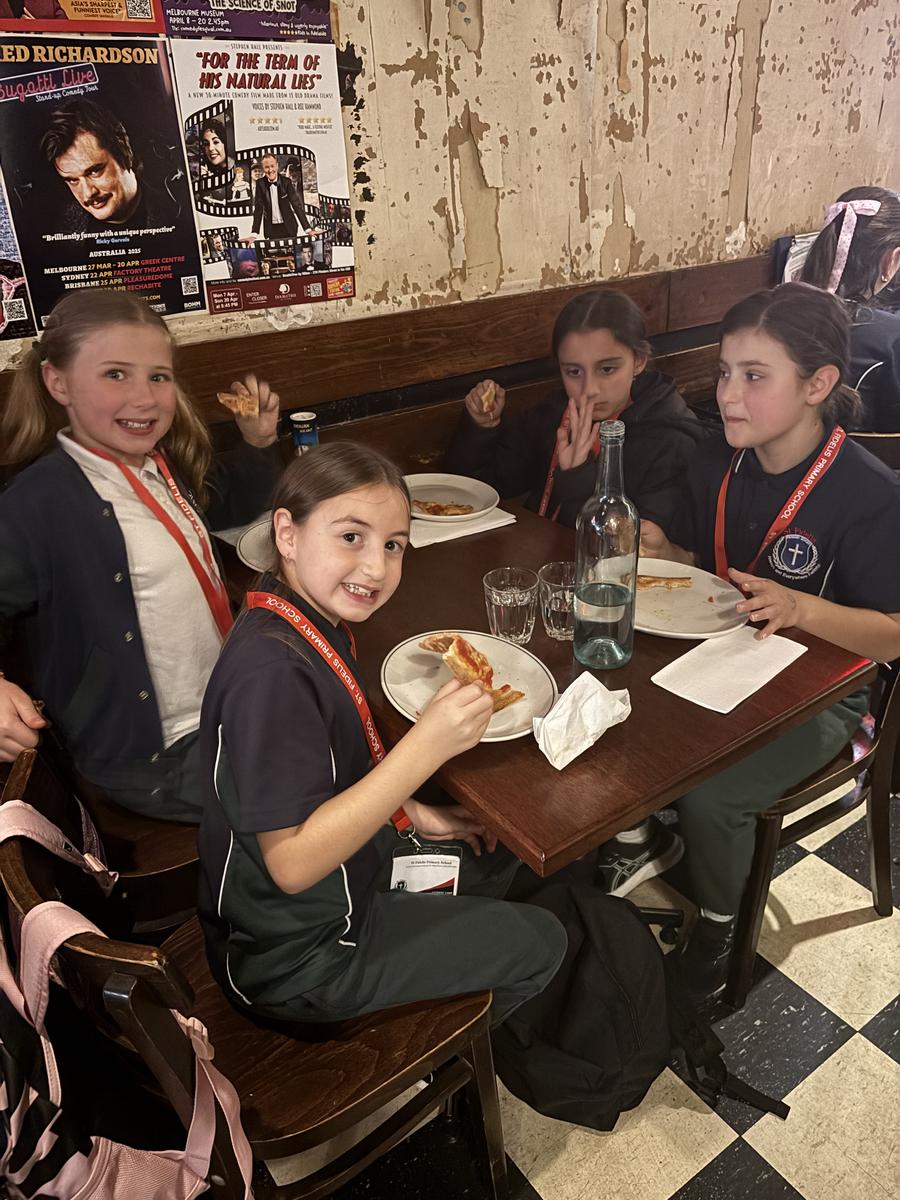
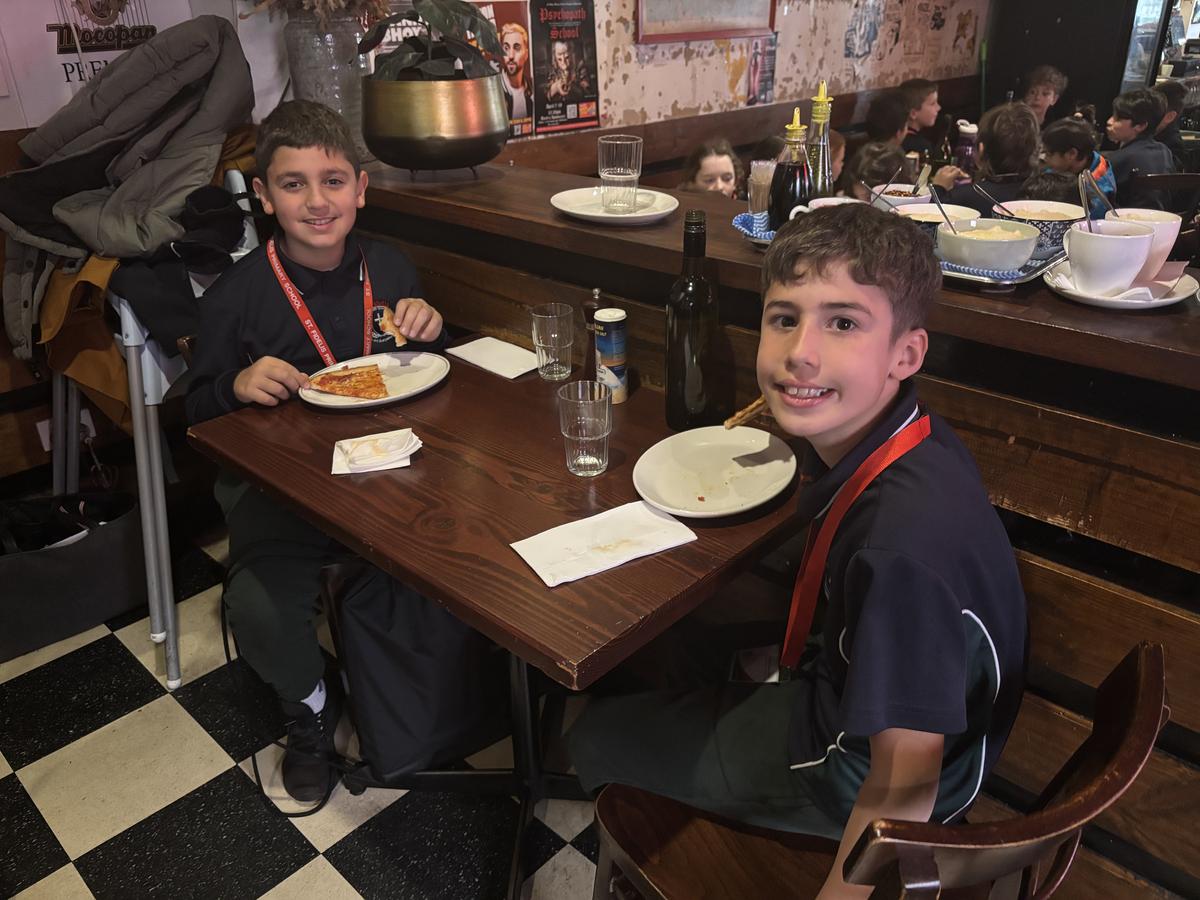
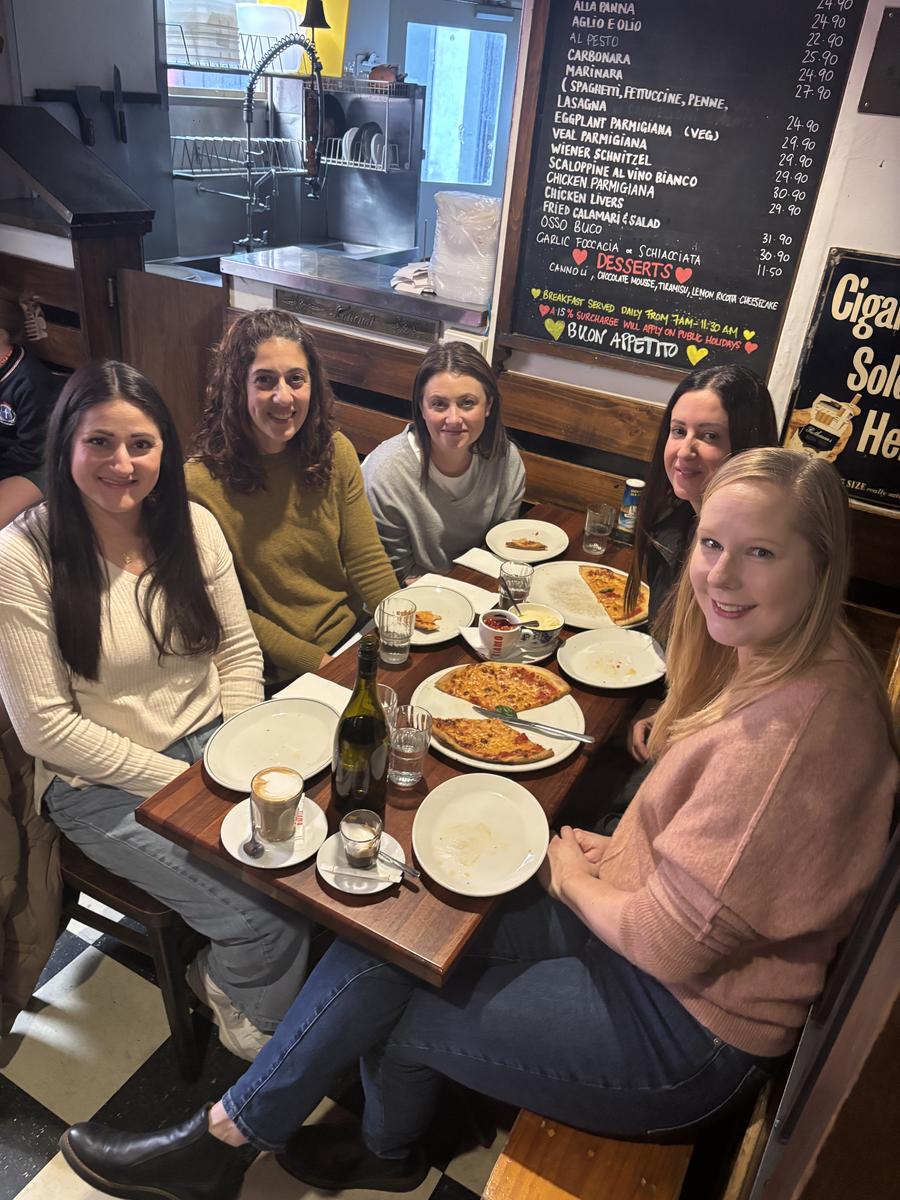
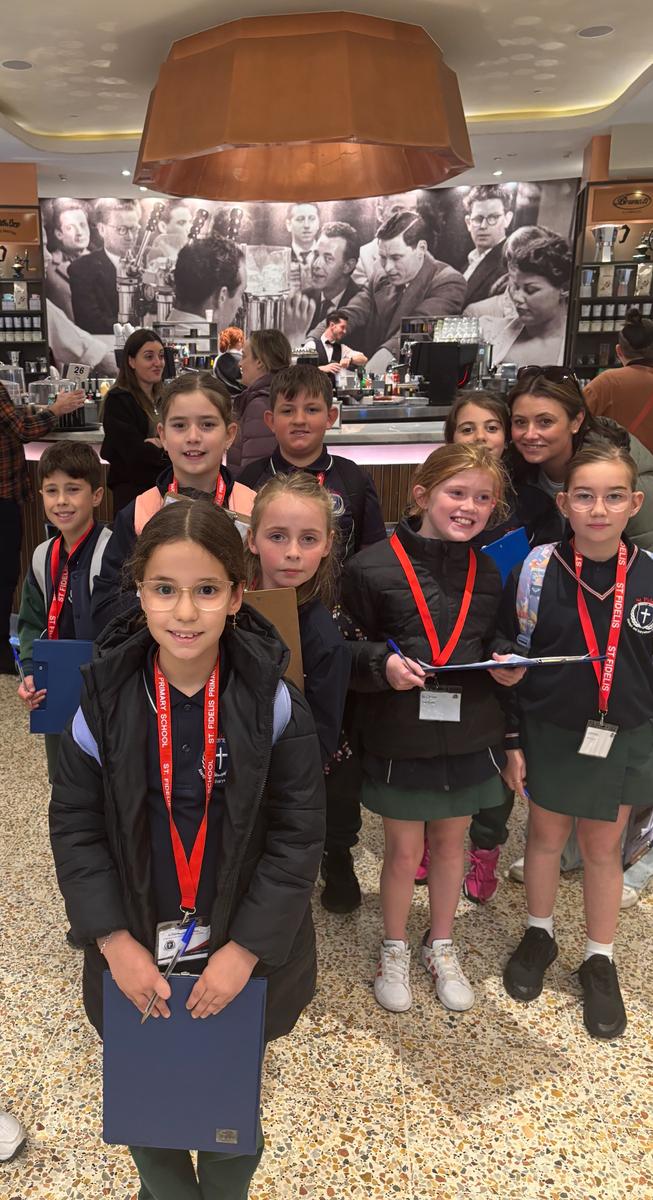

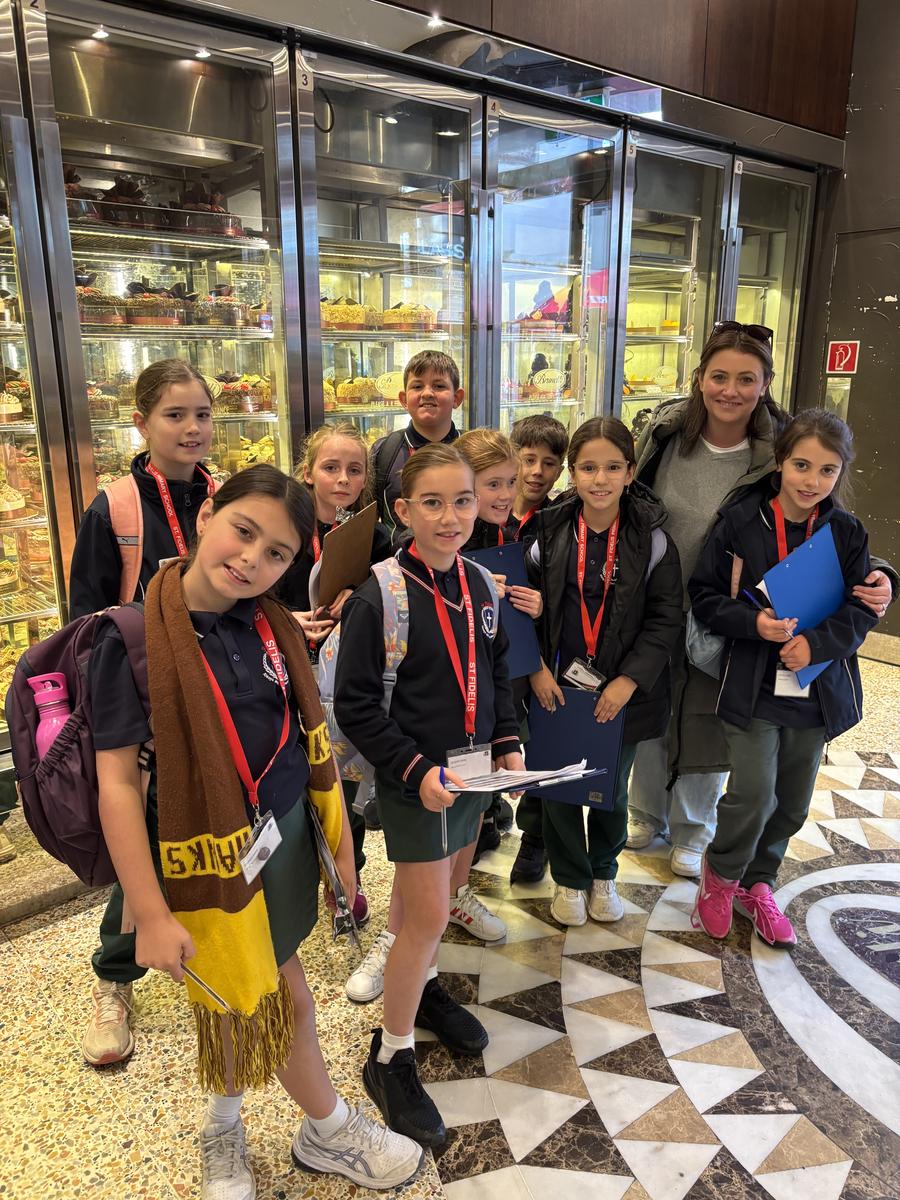
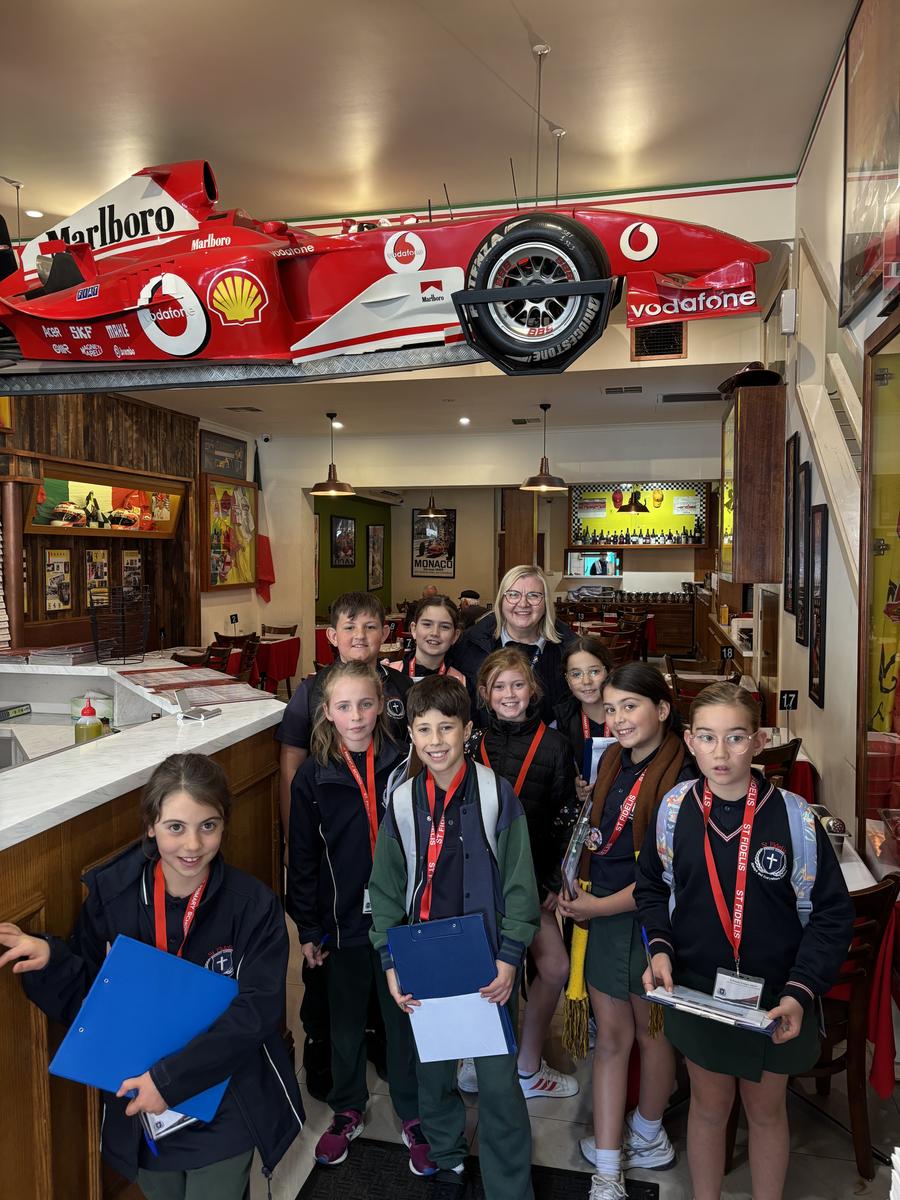



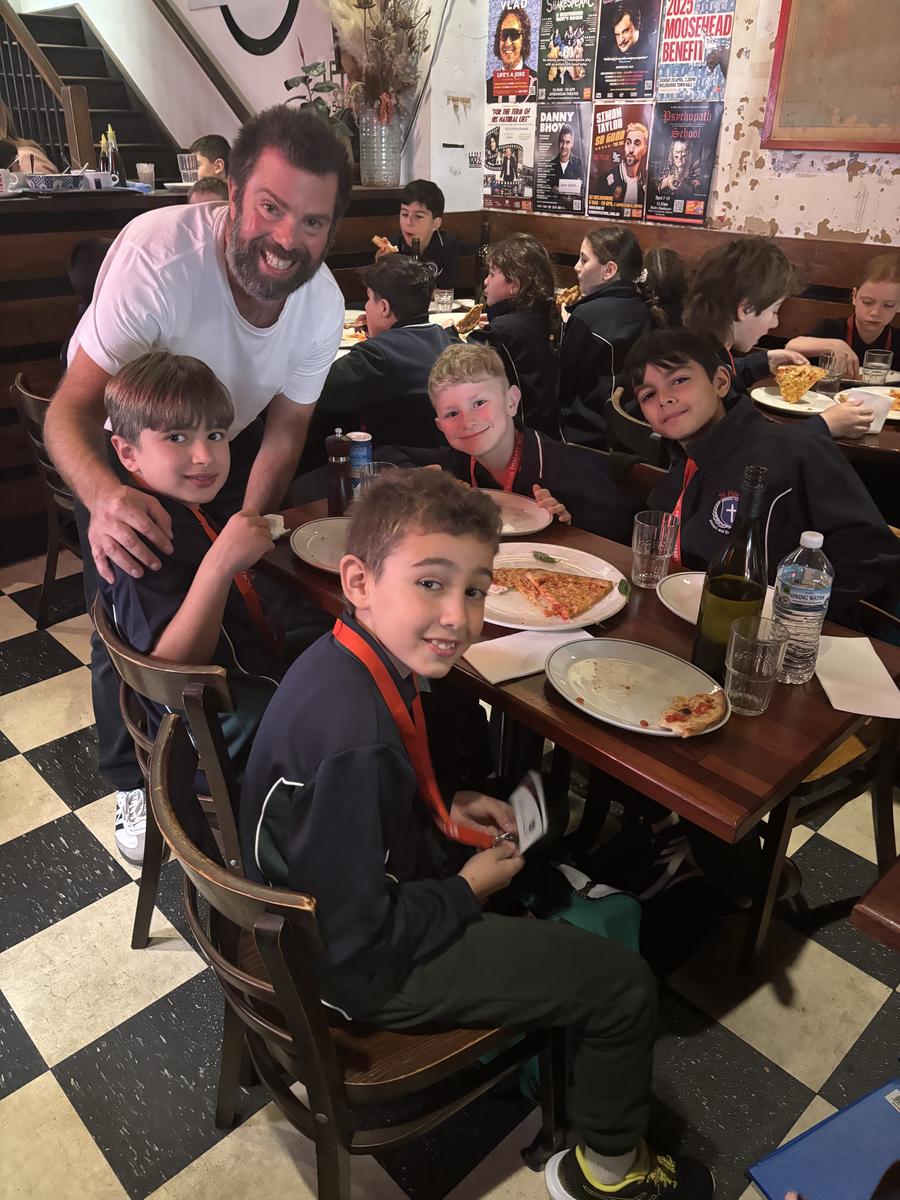


























After the presentation, half the grade 3/4 cohort went to the museo to look around. There was a wealth of information, including a giant map of Italy, which included statistics on the number of people that came from each region; an interesting timeline, showing when exactly the first Italians came to Australia; famous AFL and VFL sportspeople that had/have Italian heritage, (I wonder if signora Watson knows about this)? Many children were amazed at the variety of items that people brought along with them to their new country. They didn’t really know what life would be like once they arrived in Australia, after a long 4-8 week long journey over the high seas, so they brought with them their basic necessities. Items ranged from small toys made from chestnuts, coffee machines, books, and photos, to musical instruments such as il mandolino (the mandolin), and la fisarmonica, (piano accordion), which was obviously used to keep people entertained whilst travelling to Australia.
Il museo italiano is a very special place with many special exhibits…it’s open to the public on certain days of the week, so if you’re looking for something to do during the coming holidays, this might be an option. 😊

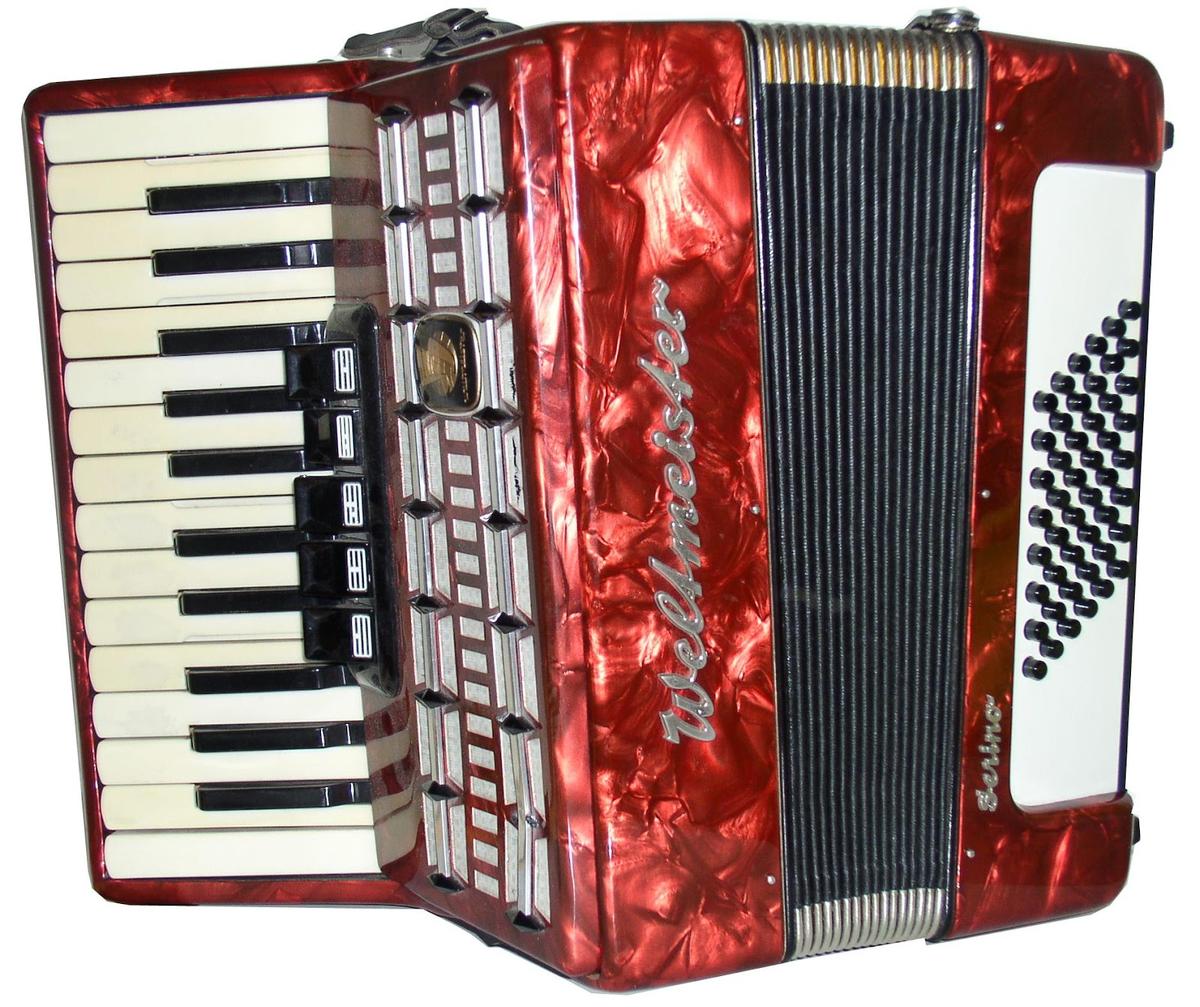


The second half of the 3/4 cohort went along part of Lygon Street, on a mission to locate various Italian cafe’s, ristoranti, (restaurants) e negozi (shops). Sadly, for numerous reasons, there are not as many as there once was in the 1950’s. Brunetti was definitely a favourite cafe / restaurant that we passed by with tongues hanging and looking at the lovely dolci, (sweets/ desserts).
After a short while, both groups swapped activities, then we met up for pranzo (lunch) once both activities had been completed. We finalised our Italian excursion day by having lunch at one of the 3/4 parent’s co-owned ristorante along Lygon Street…Tiamo. Again mille grazie Giancarlo, (Alessandro e Olivia Masini’s dad), for reserving part of your ristorante, so you could feed 50 bambini e 14 adulti. Your kindness and hospitality was greatly appreciated. We all enjoyed eating a couple of slices of pizza margherita e gelato. It was buonissimo! 🍕
























If your child was one of the children that went on the excursion venerdì scorso, I’m sure that they had many stories to tell you about their Italian cultural experience. Bravi bambini! I even had some of the parents tell me stories about how their nonni came to Australia. It is through places like the museo italiano, that Italian culture and heritage can be continually remembered and respected.
Learning a language is not only being able to speak it, read it and write it but also understanding the people, their culture, their traditions, their stories, which is what I have tried to set out to do with this Italian excursion experience. 😍
Until next time…buona settimana! (Have a good week)
Signora Rosa 🌹